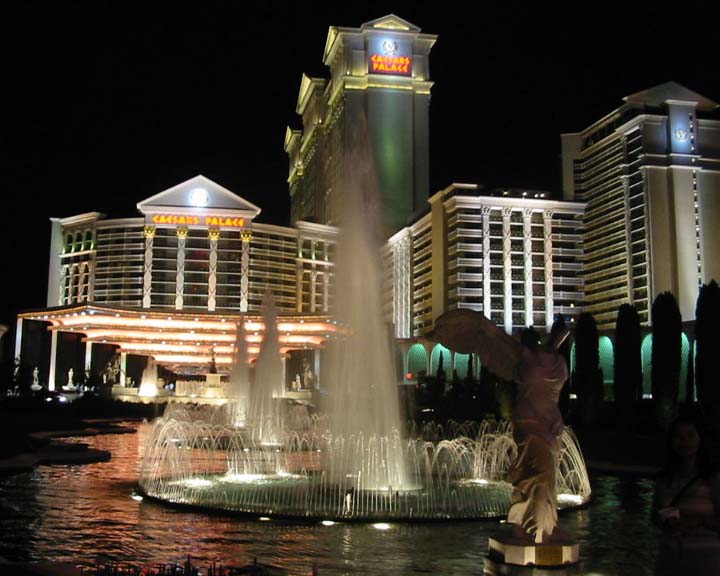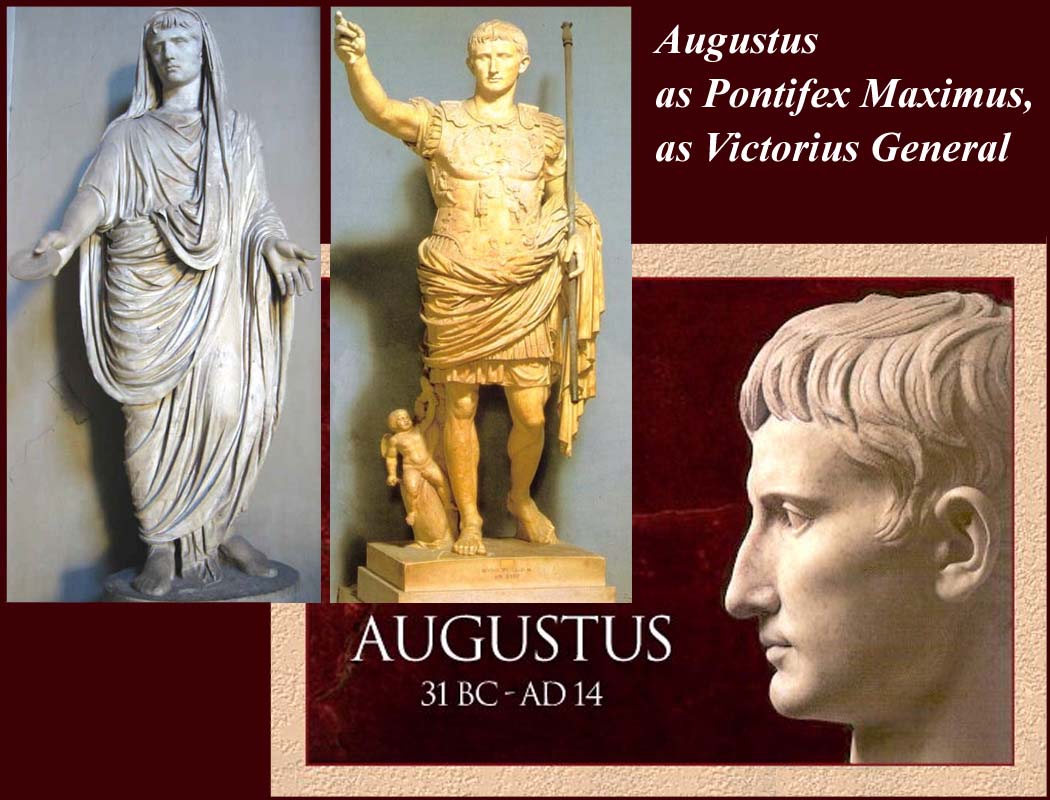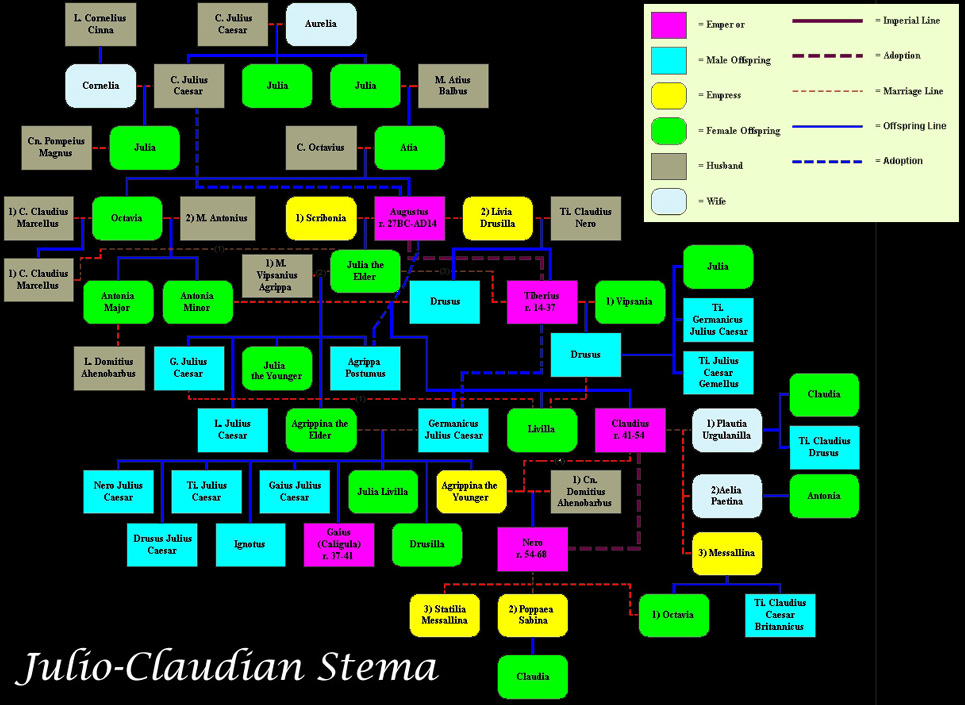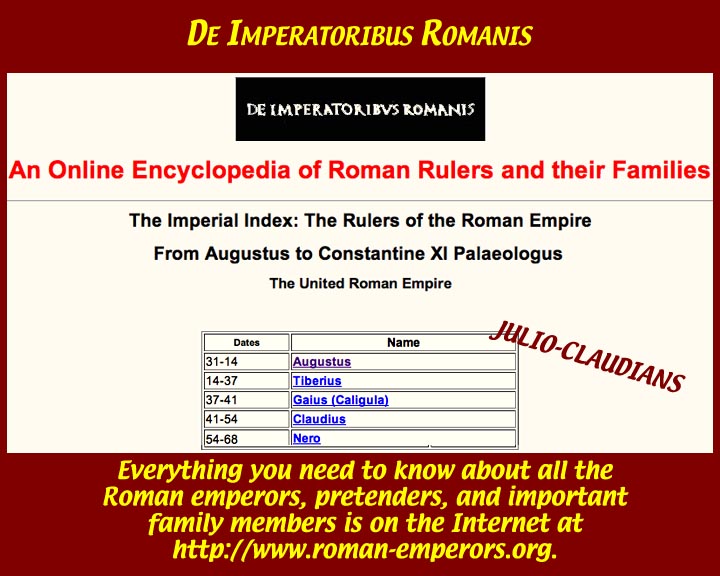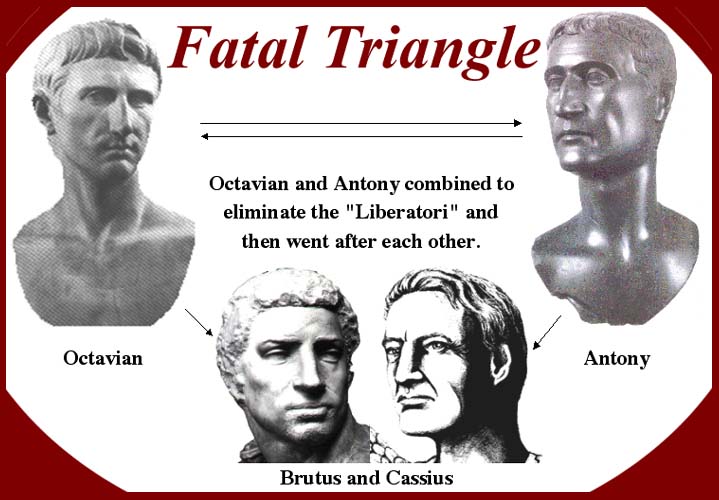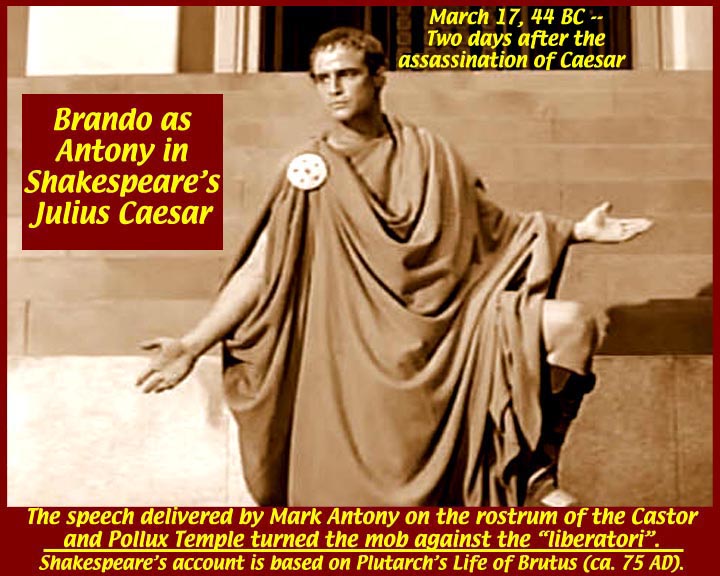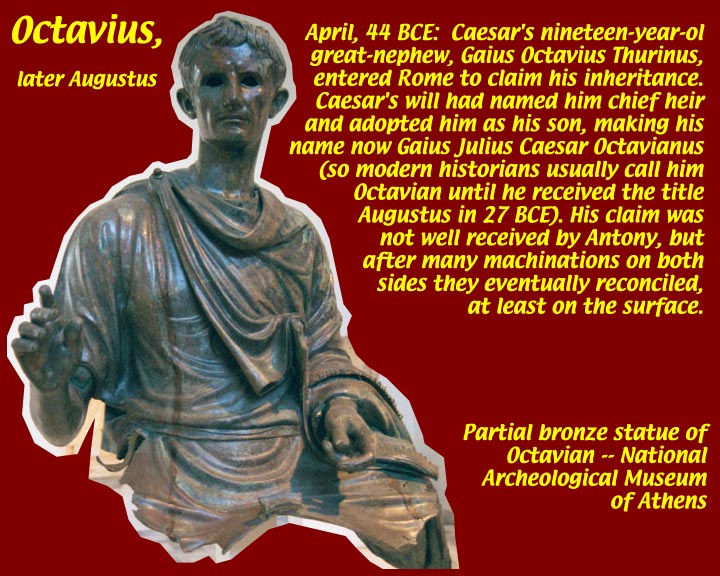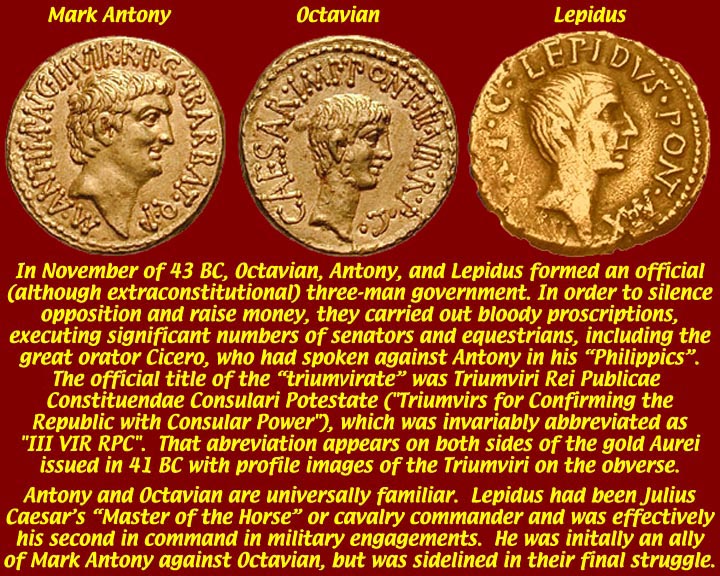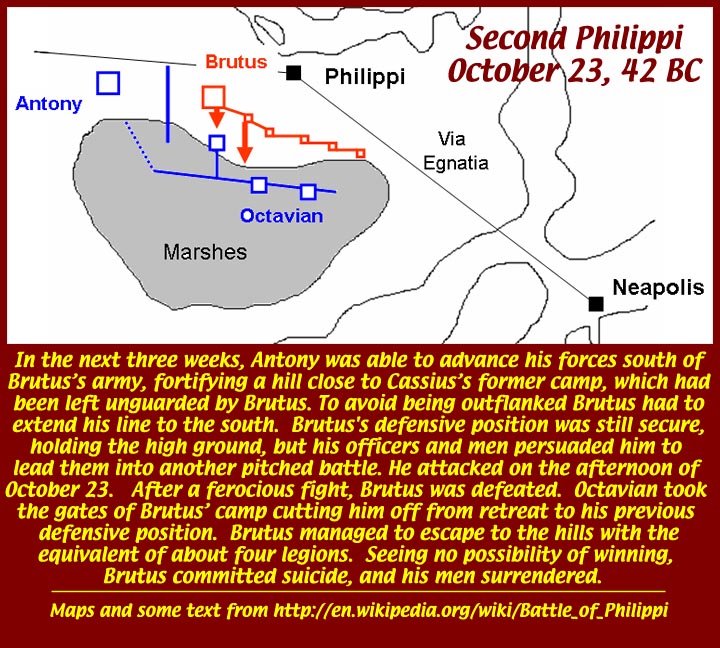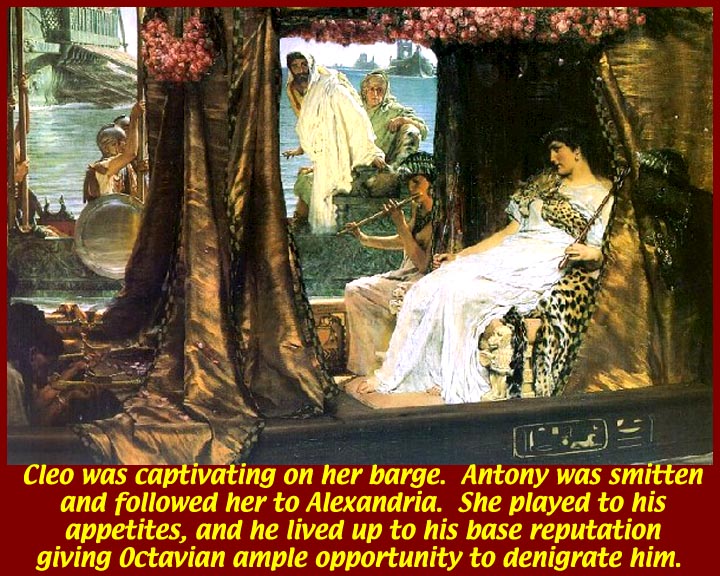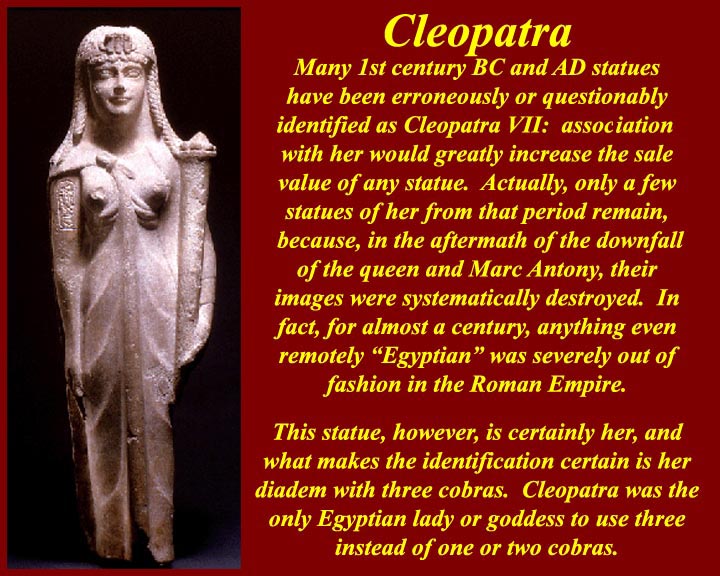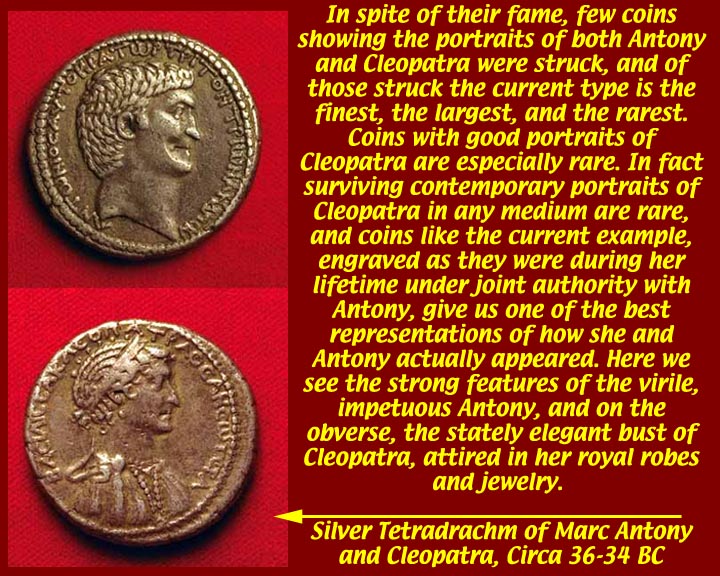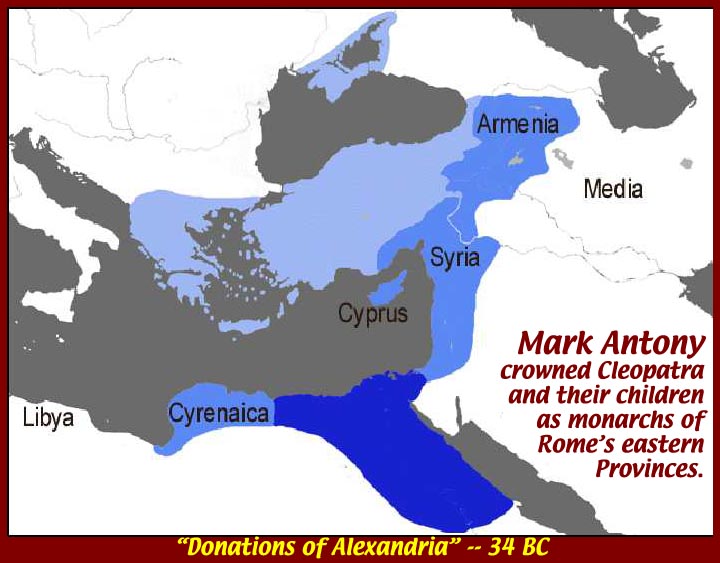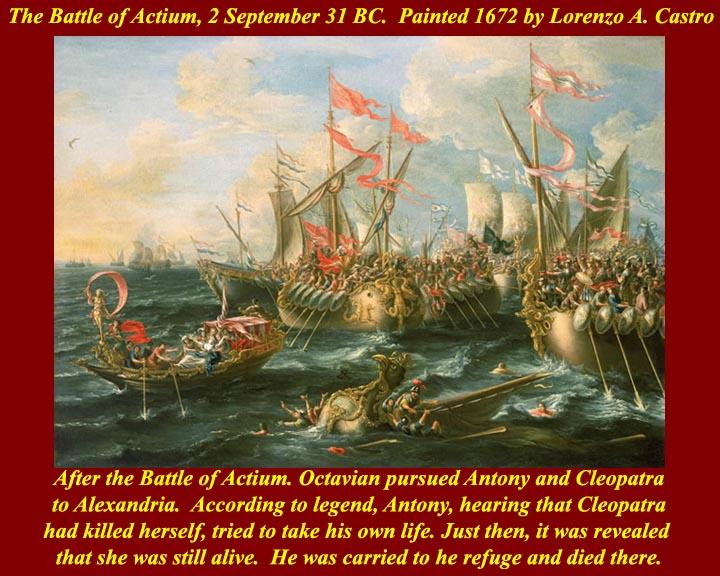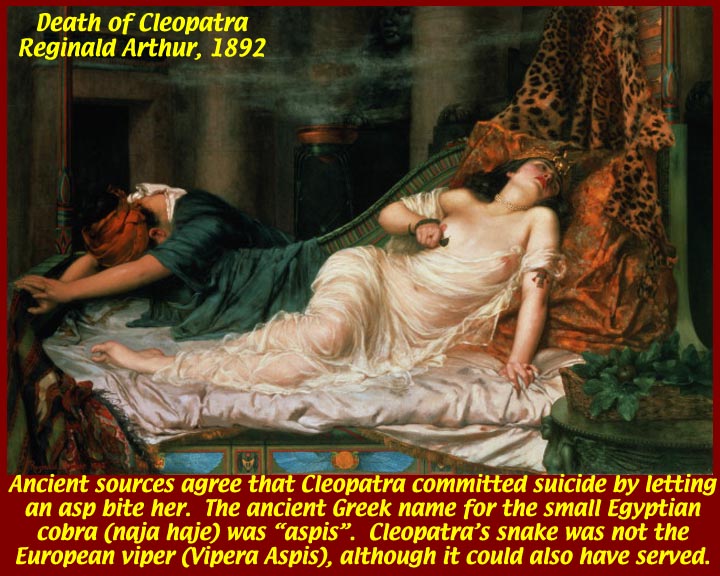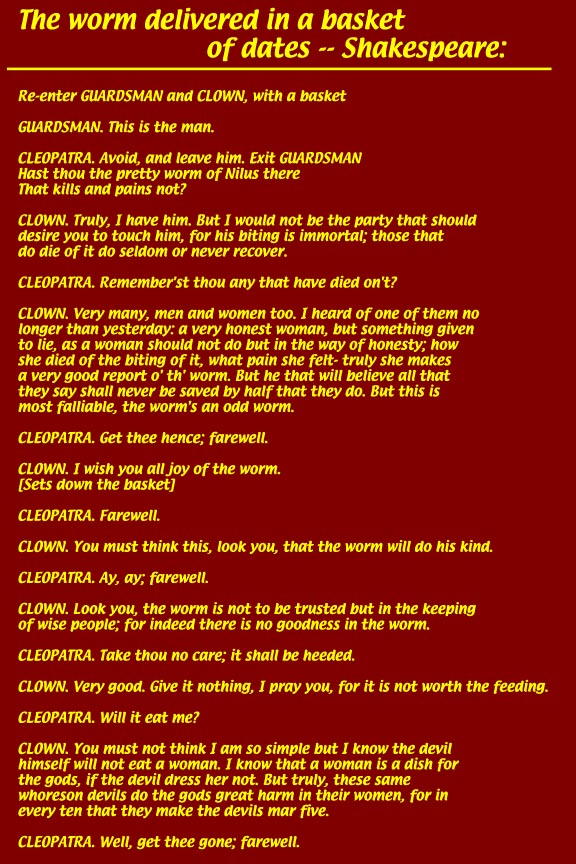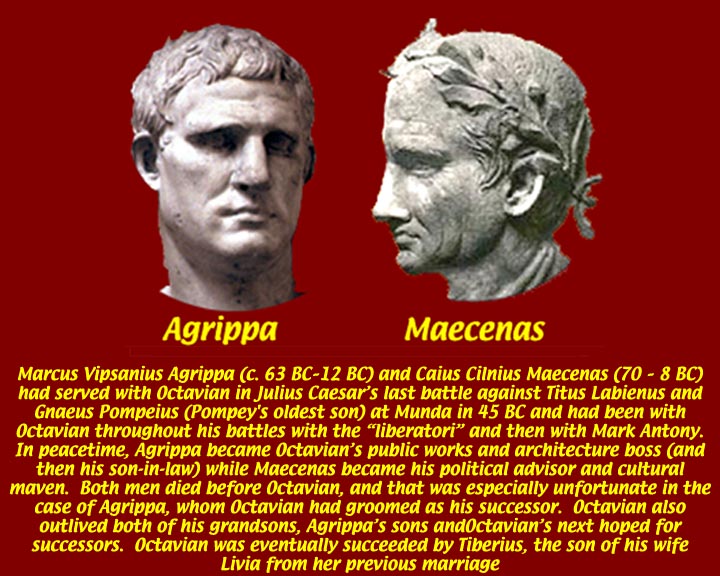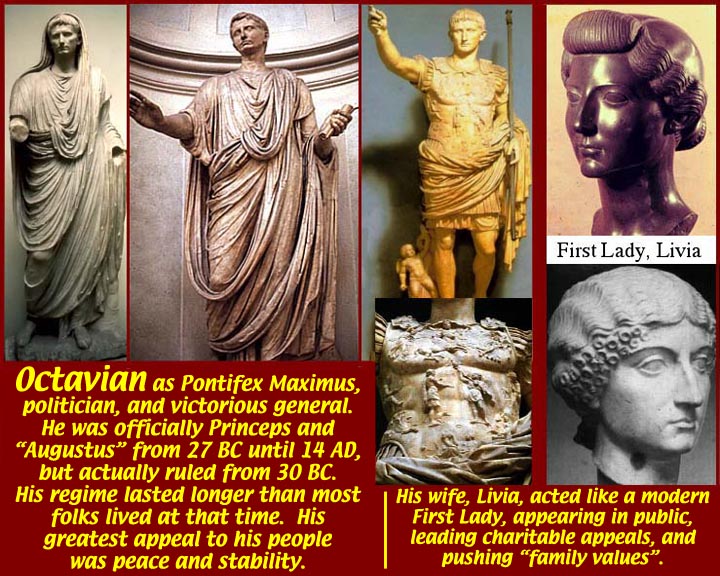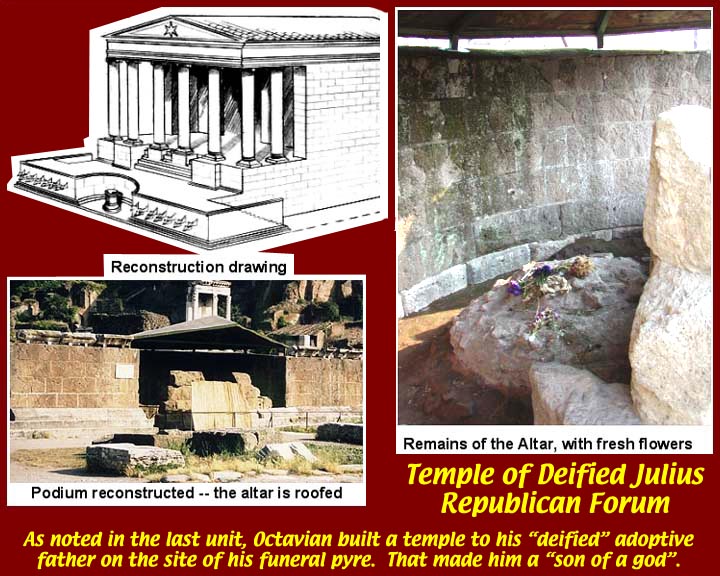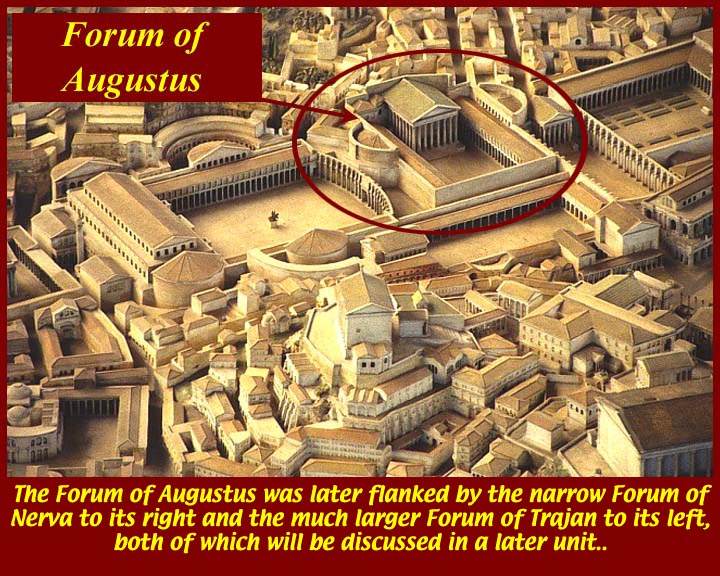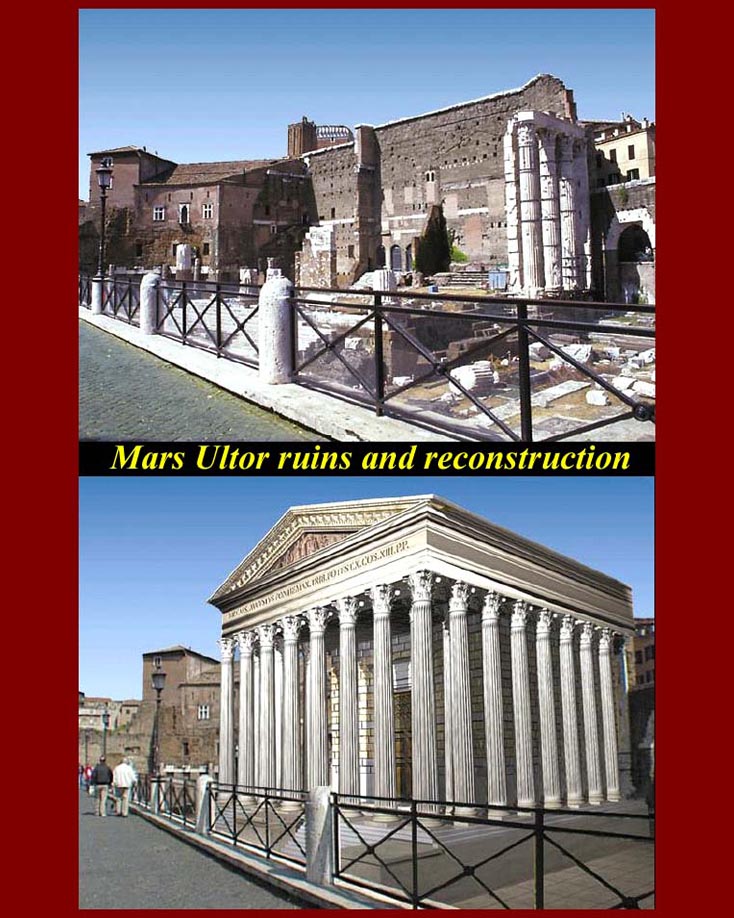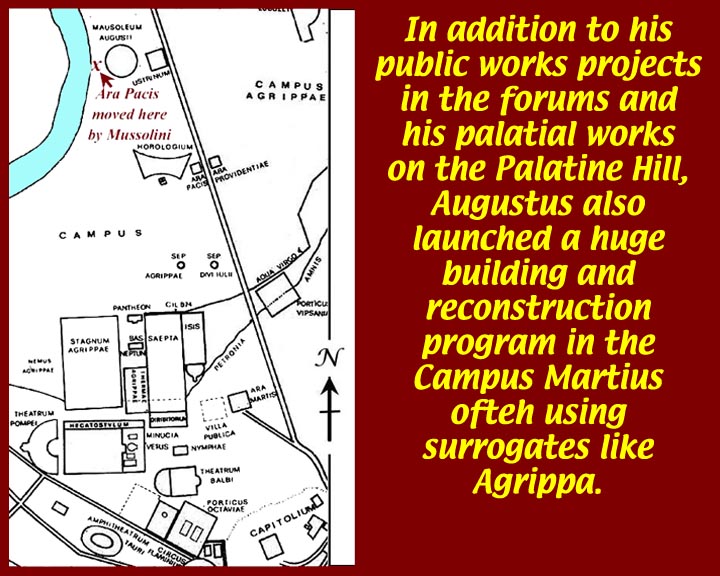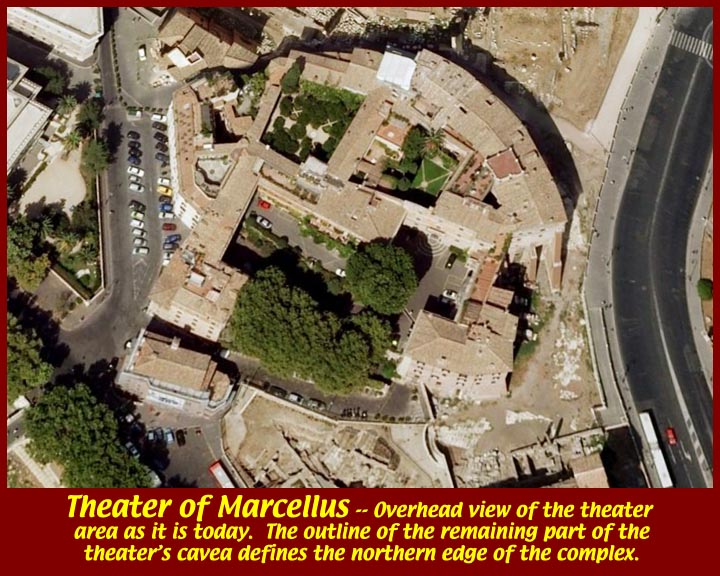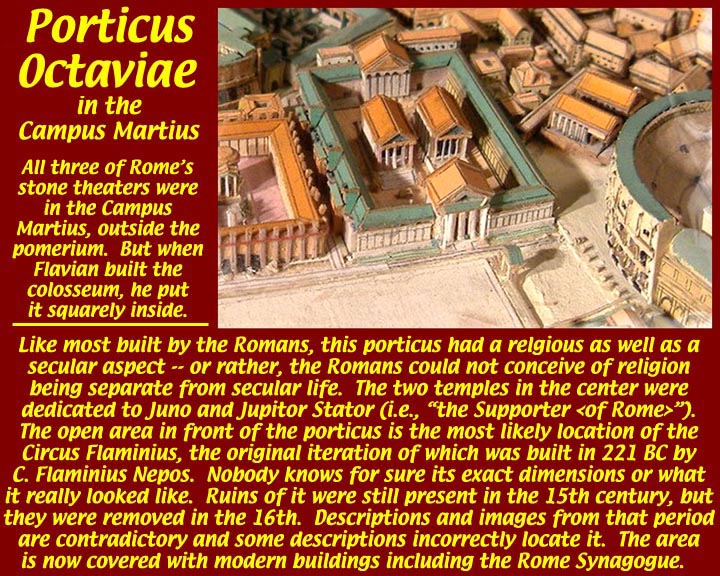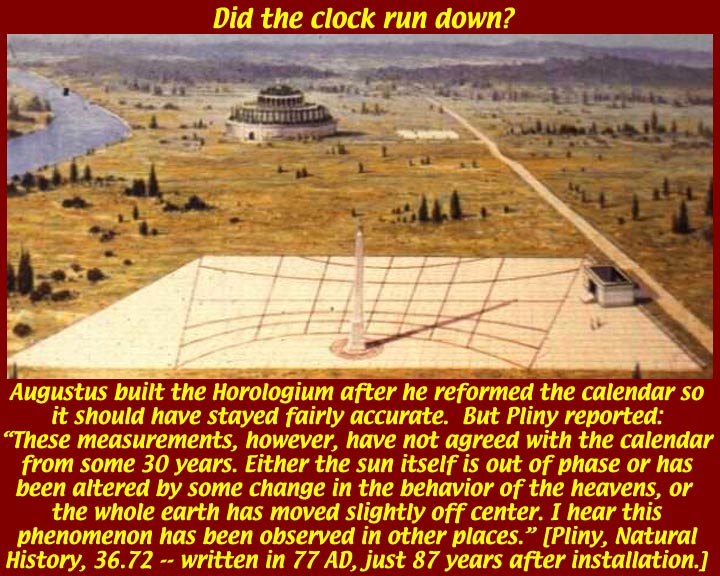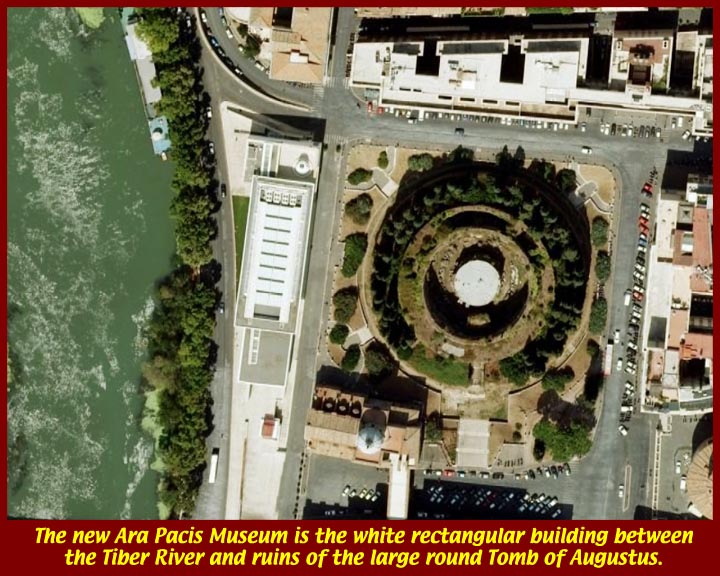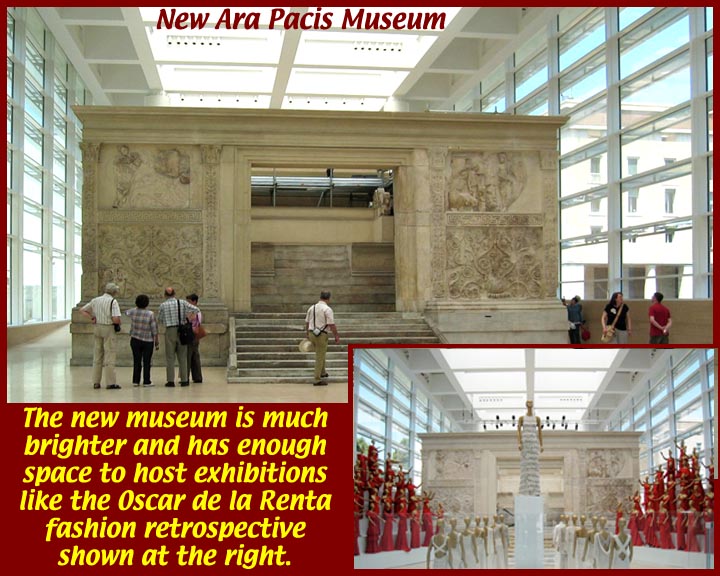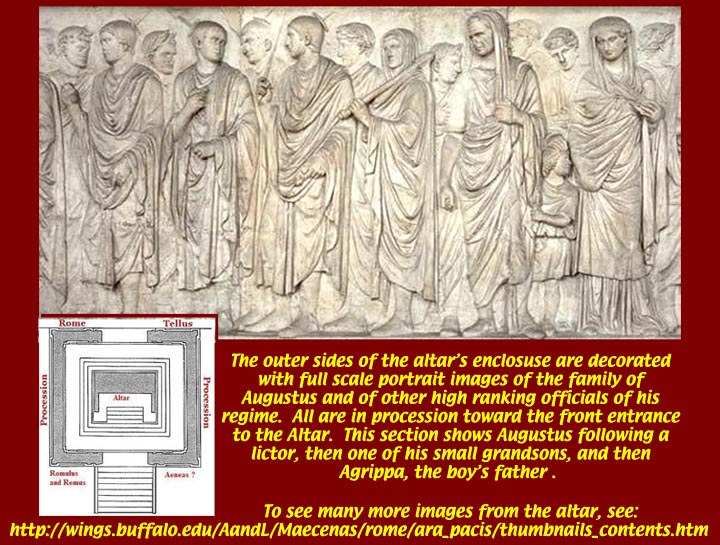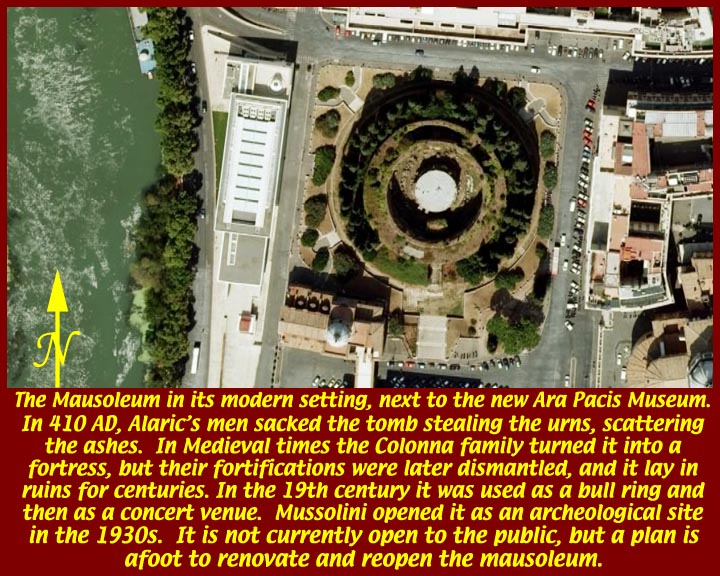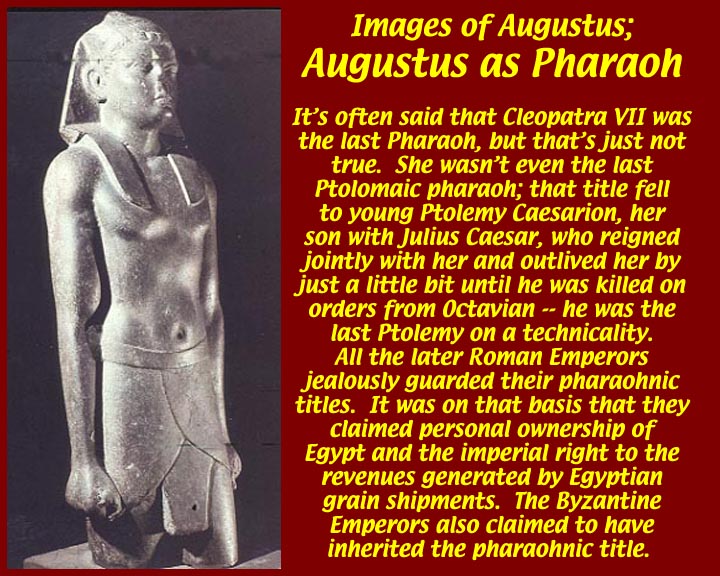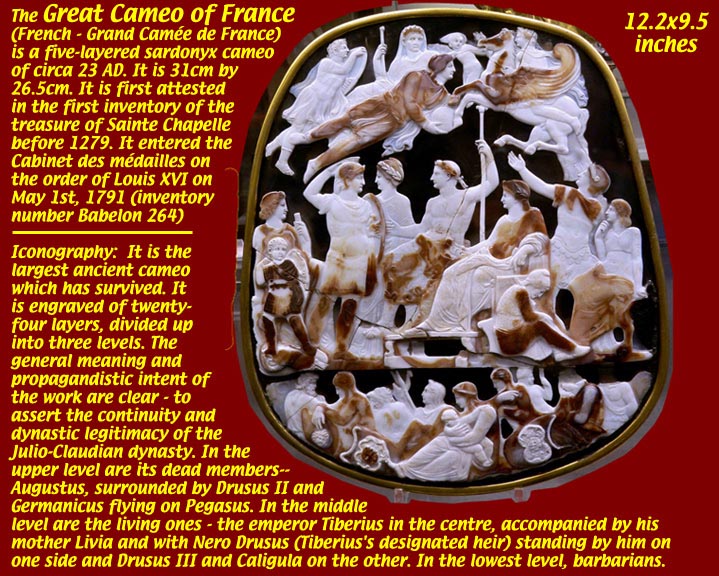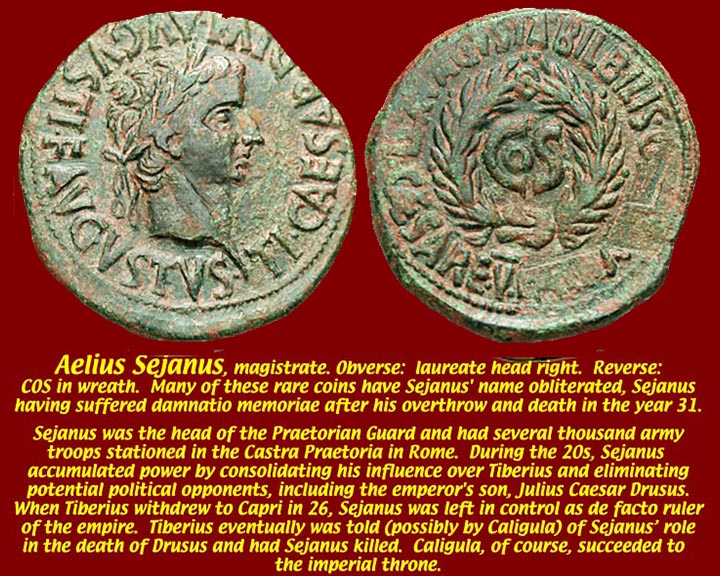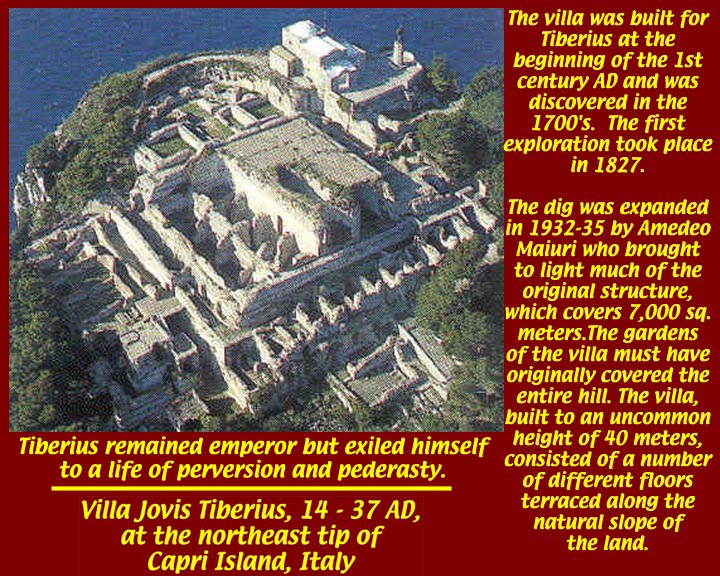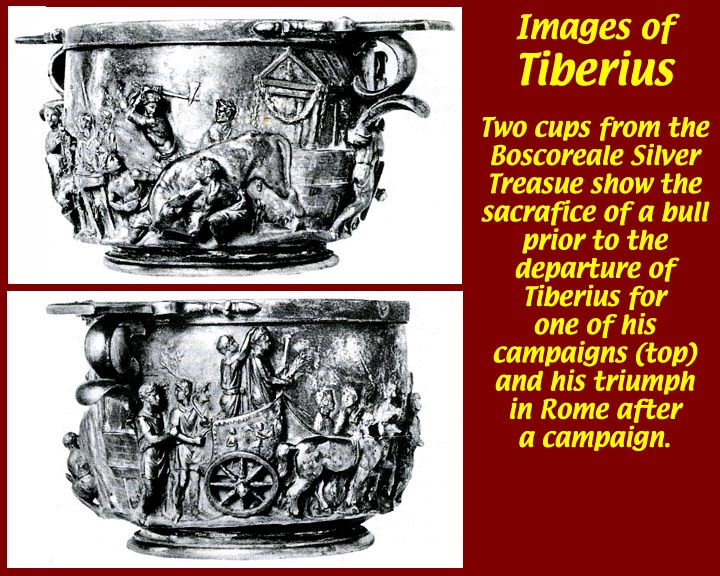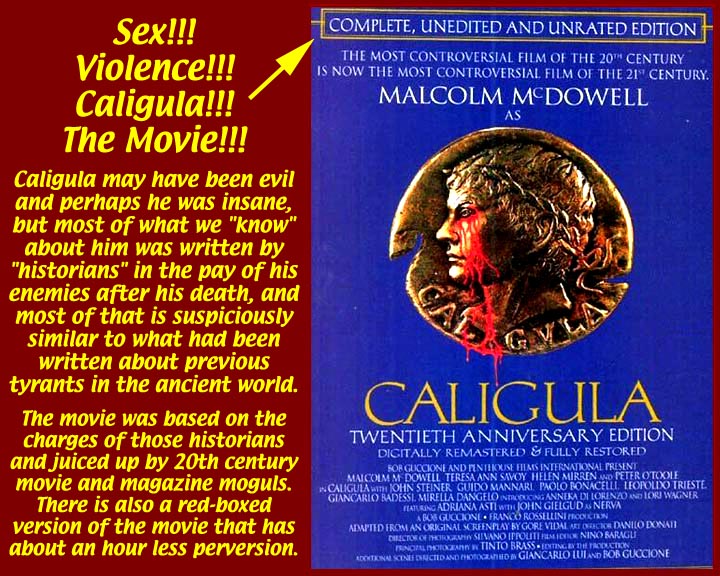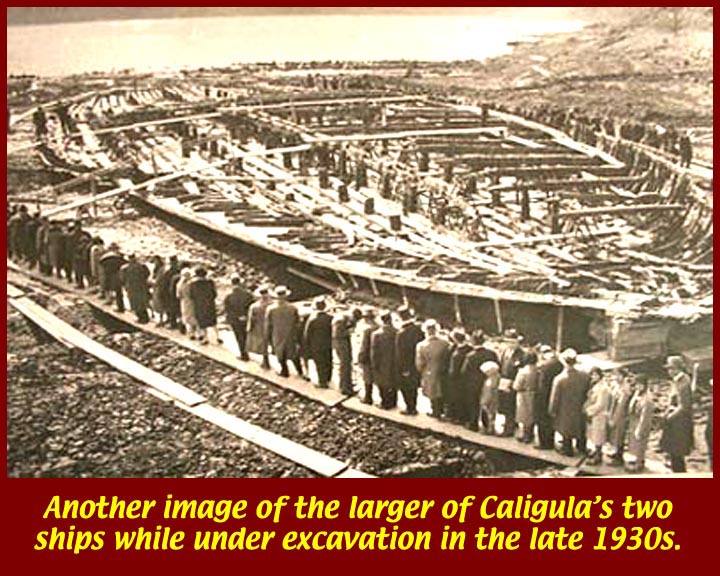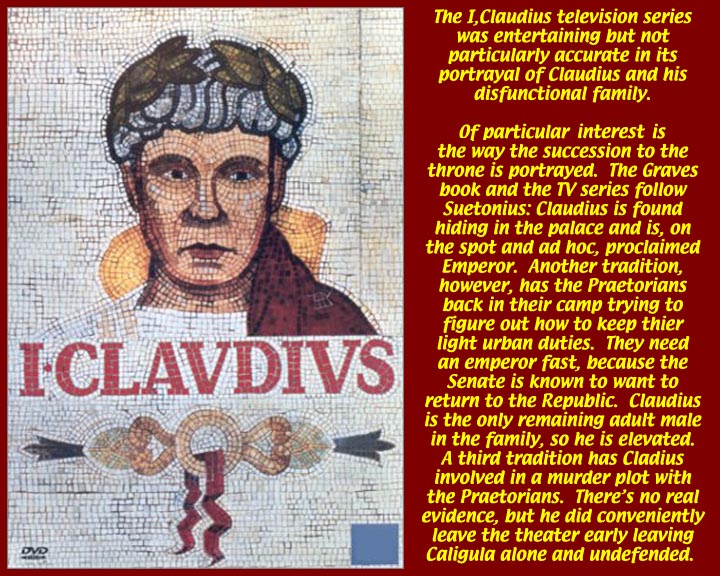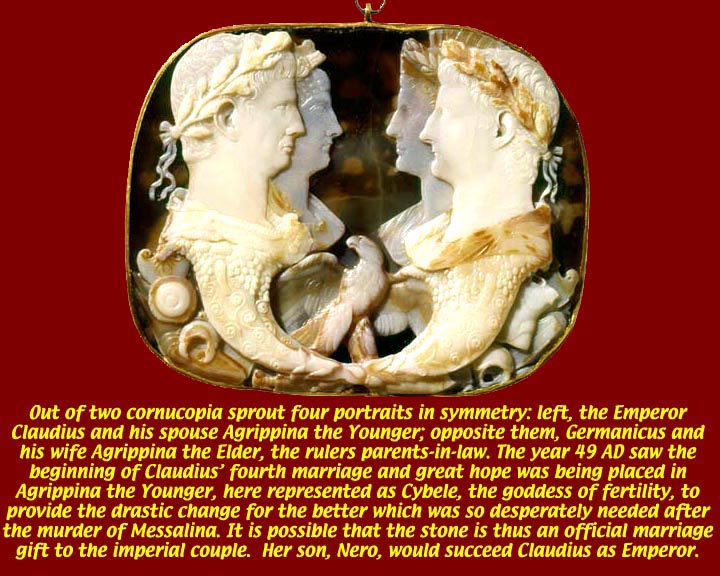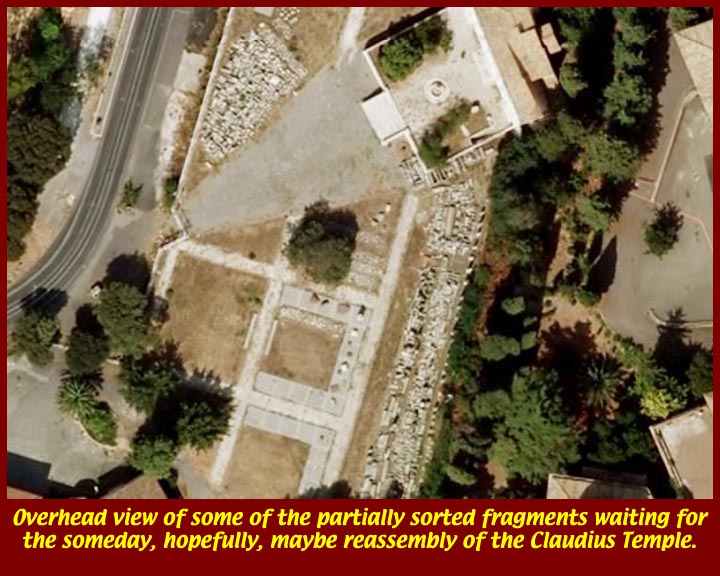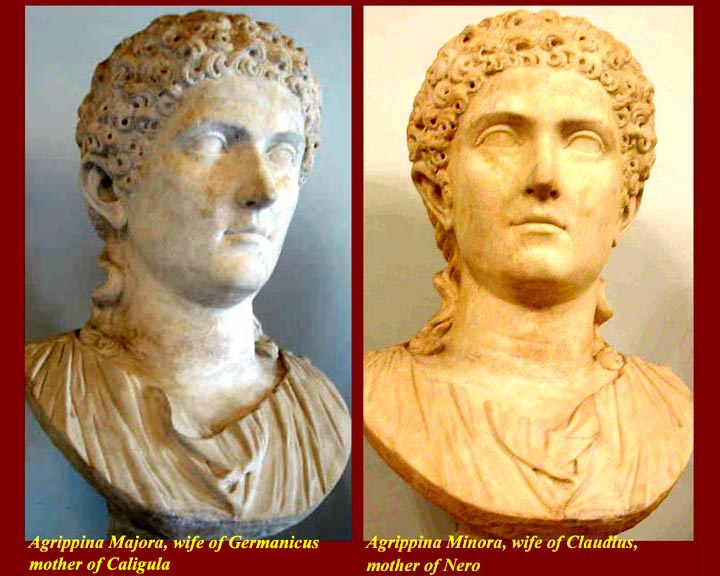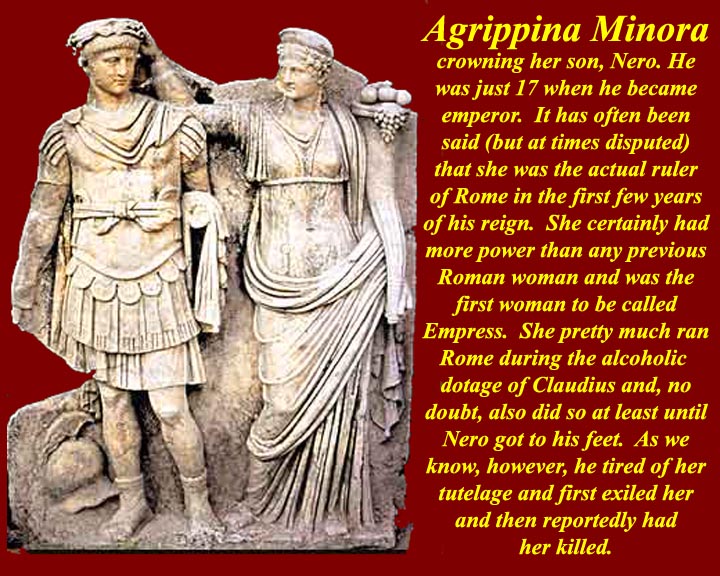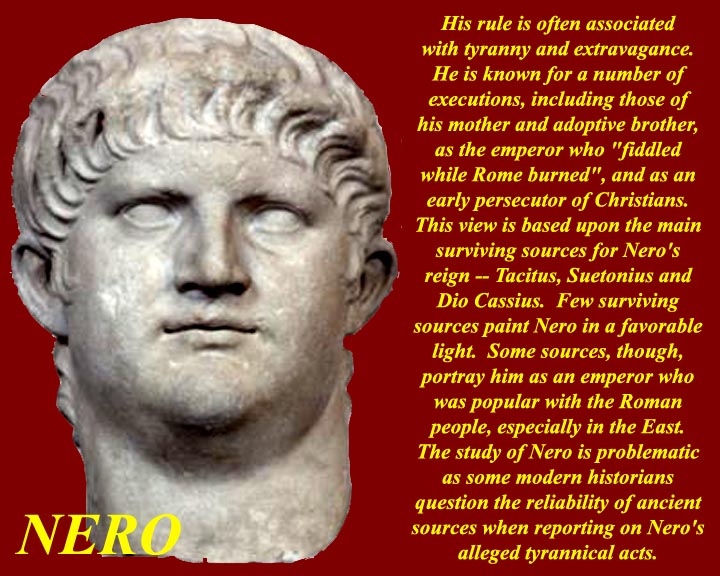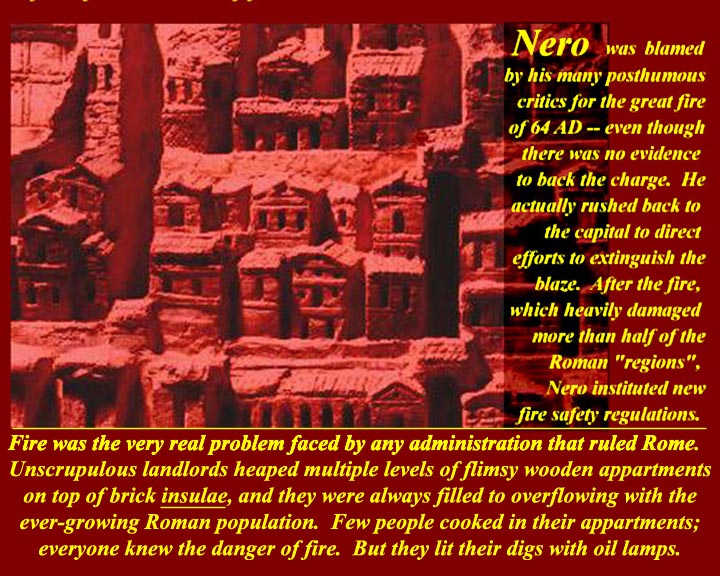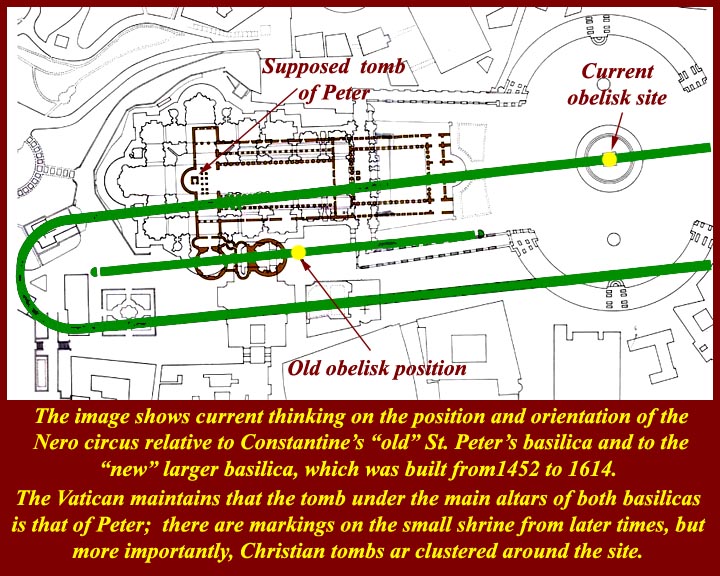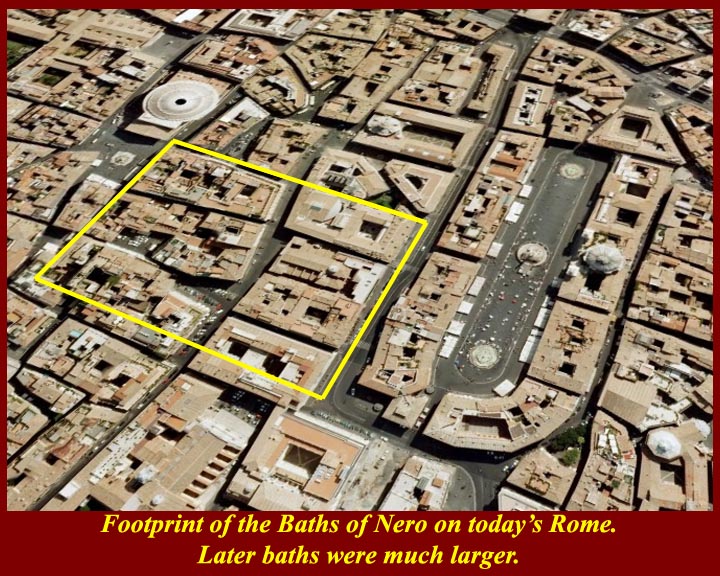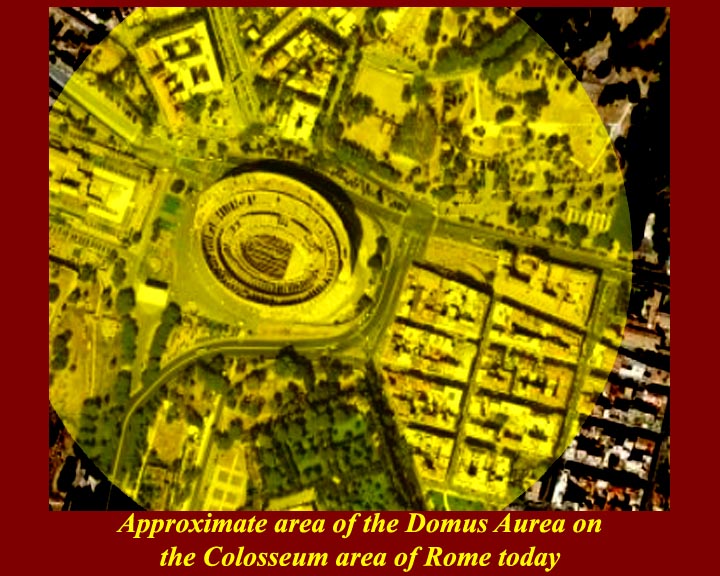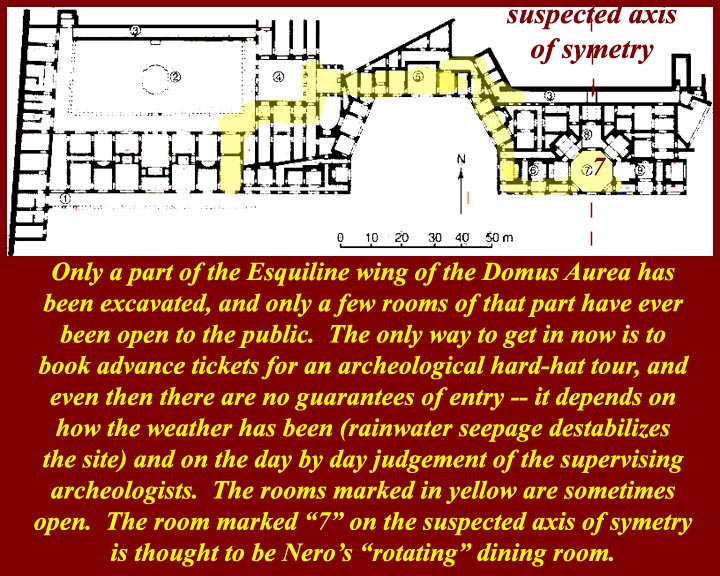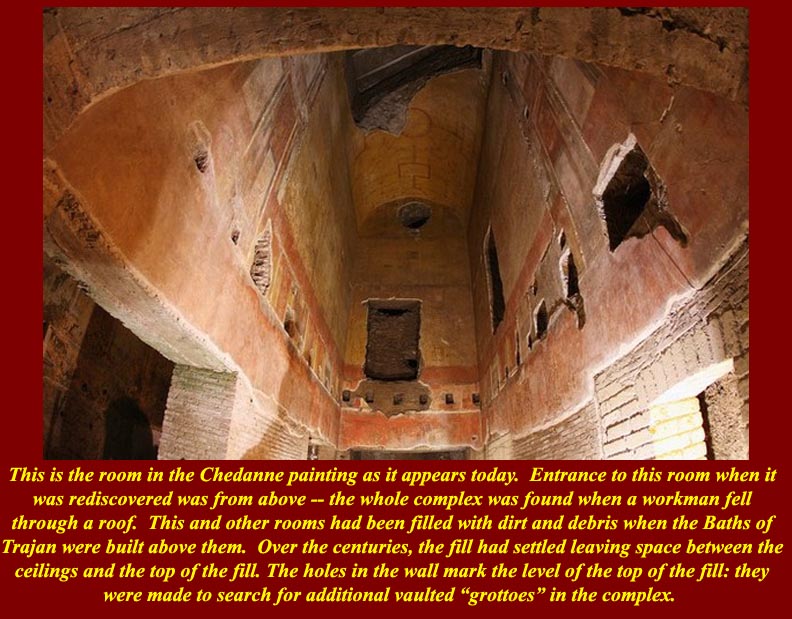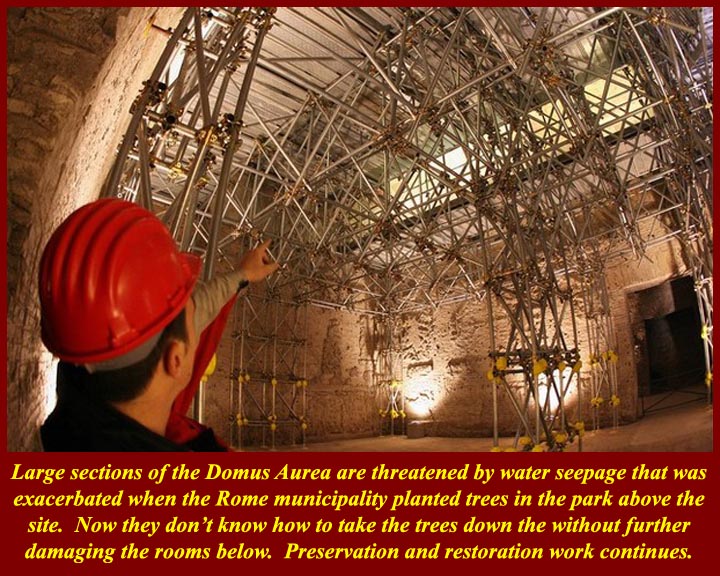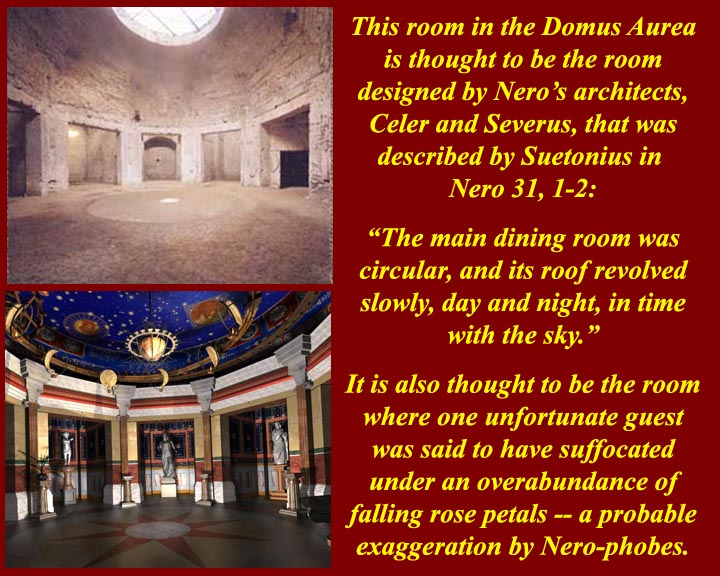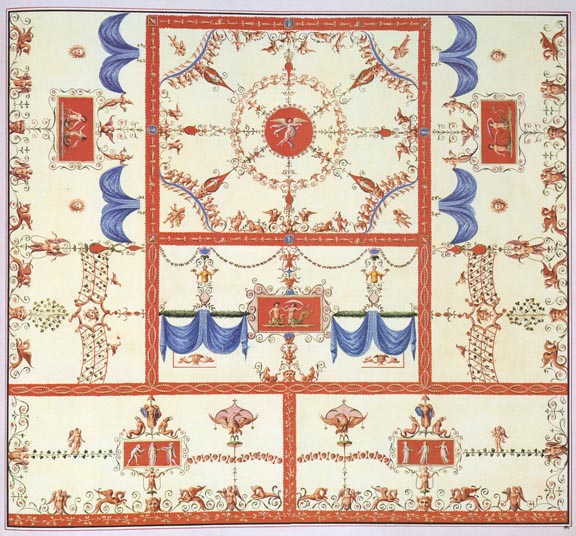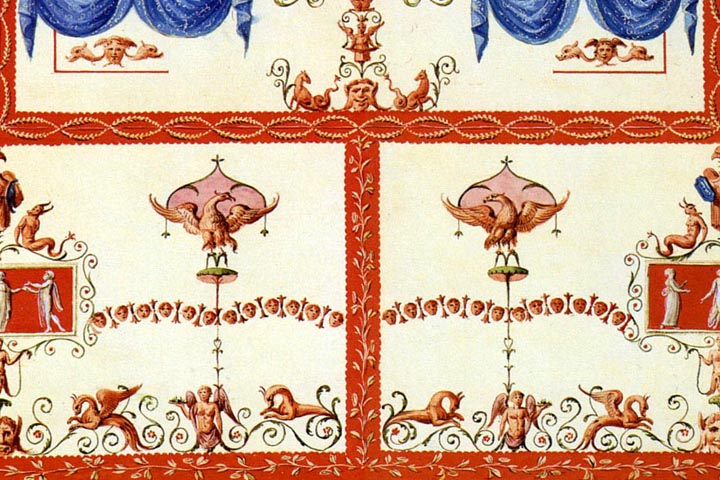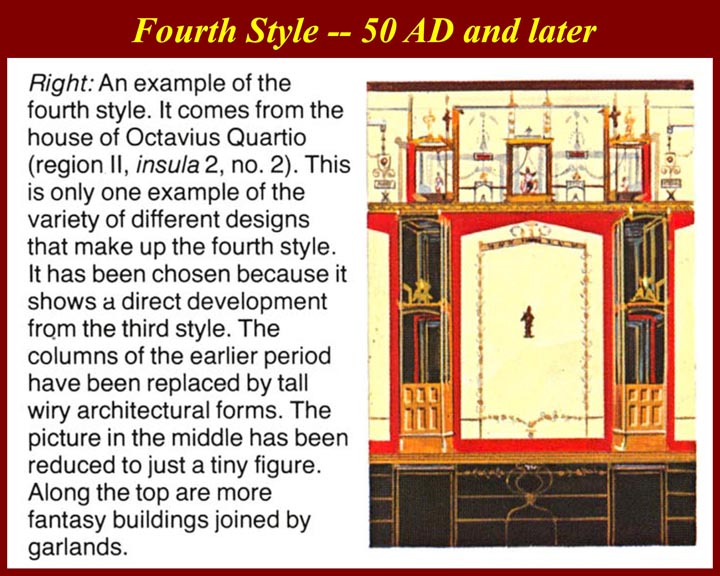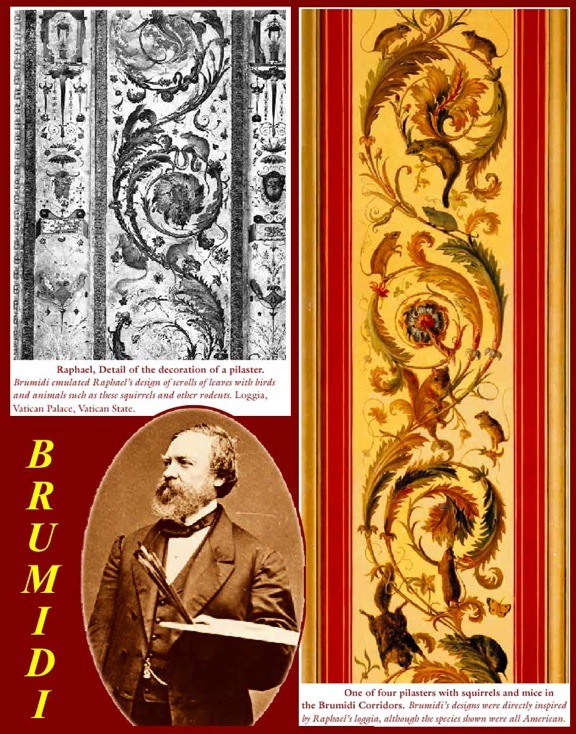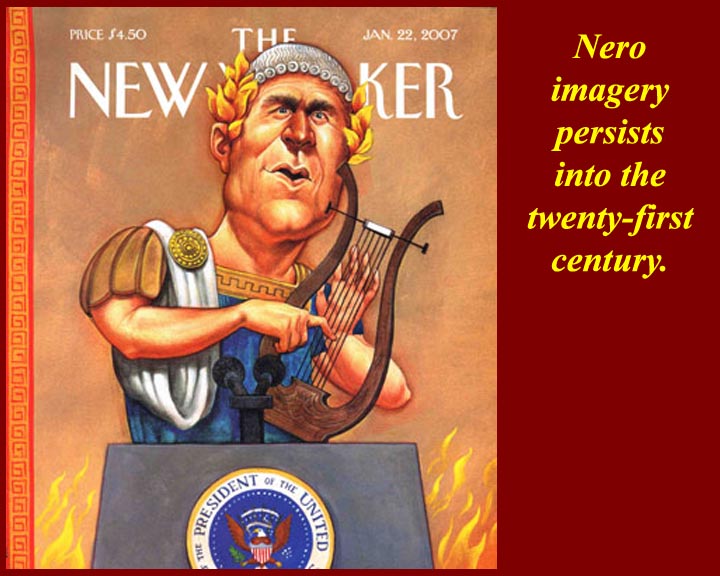Images for ALRI Ancient Rome Unit 6
Augustus and the Julio - ClaudiansClick on links and small images below to see larger images. Use the "back" or "return" button on your web browser to return to this page
A link to a translation of the Res Gestae Divi Augusti (Deeds of the divine Augustus) is at http://www.mmdtkw.org/ALRIAncRomeUnit6ResGestaeDiviAugusti.html
A link to a time line of the life of Augustus is at
http://www.mmdtkw.org/ALRIAncRomOctavianTimeline.html
A link to a chart showing the years that the Julio-Claudians reigned is at
http://www.mmdtkw.org/AU0605JulioClaudians.jpg
http://www.mmdtkw.org/AU0601Vegas.jpg
Caesar's Palace in Las Vegas.
Augustus -- The first and most important of the Emperors and a proto-Julio-Claudian, i.e., an ancestor, in one way or another, of all the Julio Claudians. (See the stema below: http://www.mmdtkw.org/AU0604JulClaudStema.jpg.)
http://www.mmdtkw.org/AU0602CaesarAugustus.jpg
Octavian inherited Julius Caesar's name and his money, but he had to use his own talent and skills to become and function effectively as religious, military, and political leader of Rome. His greatest ability appears to have been in picking top advisers early in his career -- most importantly, Agrippa and Maecenas.
http://www.mmdtkw.org/AU0603JULIO_CLAUDIANS.JPG
None of the other Julio-Claudian emperors were able to live up to the standard set by Octavian.
http://www.mmdtkw.org/AU0604JulClaudStema.jpg
The Julio-Claudian stema -- more than anyone but a specialist needs to know about the complex family tree. But just in case you need or want to know, there it is.
http://www.mmdtkw.org/AU0605JulioClaudians.jpg
For much more information on the Julio-Claudians and all the other Roman and Byzantine emperors and important family members, see De Imperatoribus Romanis at http://www.roman-emperors.org/.
http://www.mmdtkw.org/AU0606ThreeWayCivilWar.jpg
The first of complex triangular relationship in which Octavian participated was among Octavian, Mark Antony, and the "Liberatori" led by Brutus and Cassius. It took Octavian 14 years to eliminate the other participants.
http://www.mmdtkw.org/AU0607AntonySpeech.jpg
Antony had been one of Julius Caesar's top generals and also his administrator in Rome while Caesar was chasing down the remnants of the Pomeyians. He also clearly was a very good orator -- he swayed the Roman mob, which might otherwise have supported the Liberatori. He did not deliver the stirring Shakespearean speech that Marlon Brando is presenting in this image, but it had the same import. The speech left Antony in charge of Rome as the Liberatori fled the city, and Octavian would not arrive in the city until early May of 44 BC, i.e., more than 45 days after the assassination of Caesar. (Beware -- cum grano salis: The "Rome" TV series incorrectly puts Octavian, his mother Atia, and his sister Octavia in Rome at the time of Caesar's assassination. None of them were really there. Don't believe everything you see on television!)
http://www.mmdtkw.org/AU0608Octavian.jpg
Octavian entered Rome and asked Mark Antony for his inheritance. Antony refused and they came to blows. It took military victories over Antony first at Forum Gallorum and then at Mutina before Octavian's rights were recognized in Rome and the money was handed over. Antony retreated into the foothills of the Alps (April 43 BC). Meanwhile, the Liberatori were gathering forces in the east and were threatening to march toward Rome.
http://www.mmdtkw.org/AU0609iiiVirRPC.jpg
Antony (with Lepidus in tow) and Octavian met in October of 43 BC on the island of Reni in north central Italy and hammered out an alliance to confront the Liberatori. At the end of November the Lex Titia legalizes the triumvirate. Preparations begin for the war against the Liberatori.
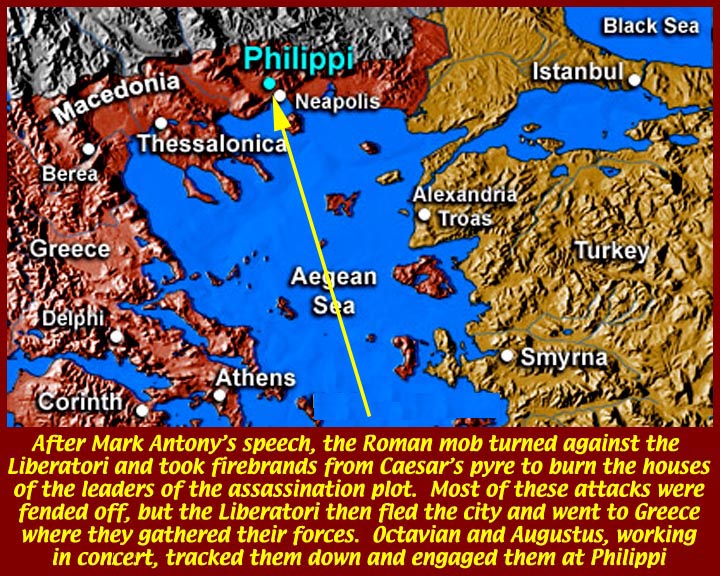
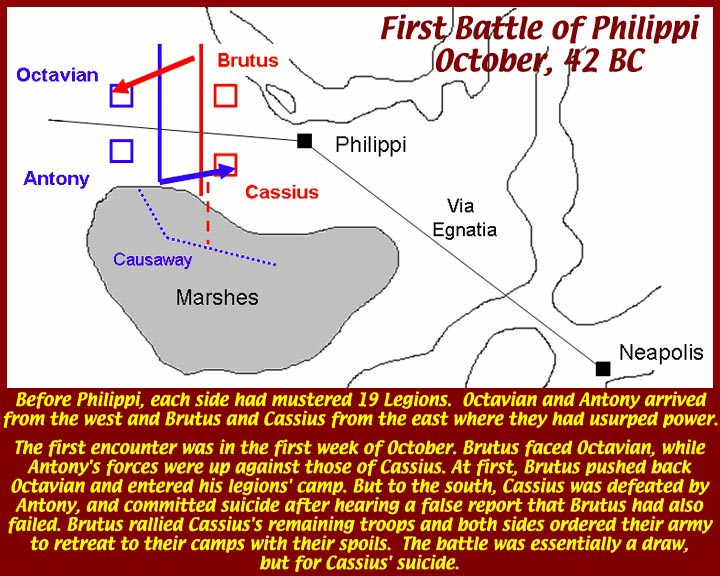
http://www.mmdtkw.org/AU0610PhilippiLocator.jpg
http://www.mmdtkw.org/AU0611FirstPhilippi.jpg
http://www.mmdtkw.org/AU0612SecondPhilippi.jpg
The Triumvirate army moving east intercepted the Liberatori, who were moving west, at the small town of Phliippi in Macedonia. Each side had 19 legions. There were actually two battles at Philippi. Philippi 1, in the first week of October of 42, was a draw, but Cassius, thinking that the Liberatori had lost, committed suicide. Philippi 2 was a resounding victory for Antony and Octavian. Brutus retreated to the hills with four legions, but, knowing all was lost, also committed suicide. His four legions surrendered and were absorbed into the Triumvir army. After the battle, Antony headed east to his territory as defined in the Triumvirate agreement -- he went to carry out Julius Caesar's planned war against Parthia. Octavian returned to Rome.
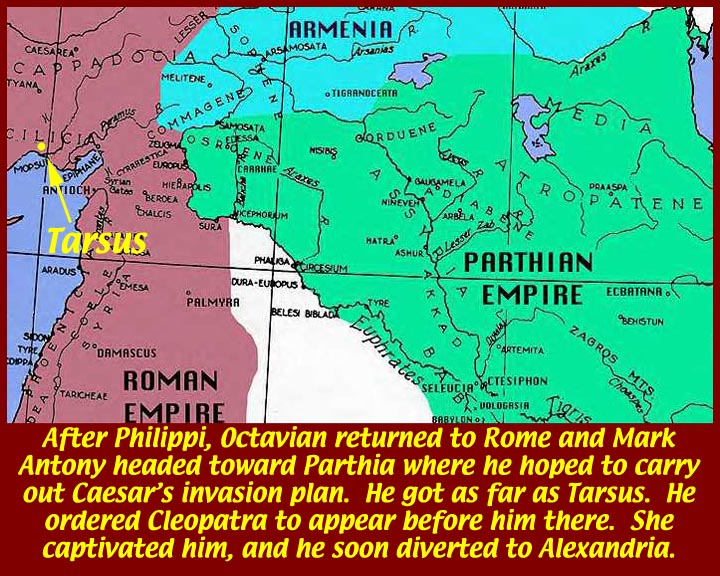
http://www.mmdtkw.org/AU0613AntonyCleopatraTarsus.jpg
http://www.mmdtkw.org/AU0614aCleopatraBarged.jpg
Anthony only got as far as Tarsus. There he summoned Cleopatra -- she owed the Romans money. She came in style and won Antony's heart.
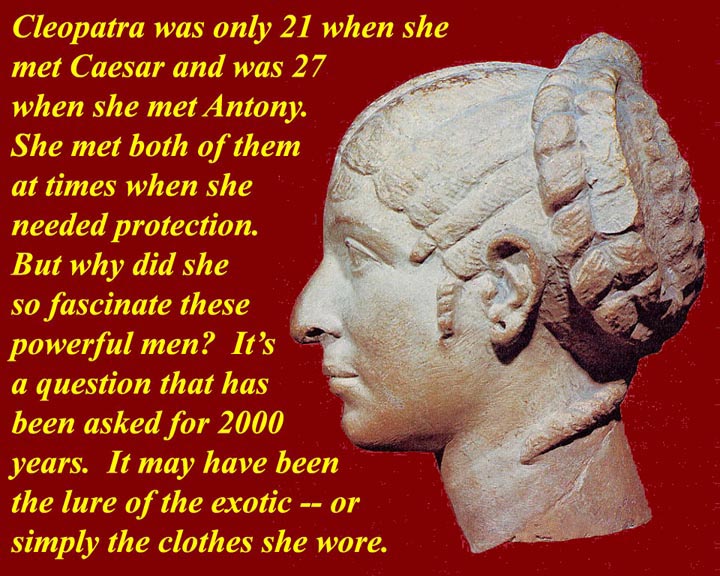
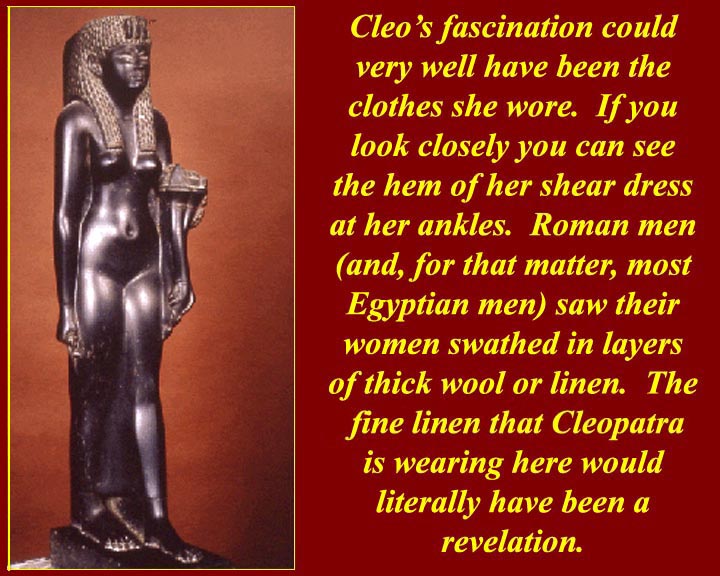
http://www.mmdtkw.org/AU0614bCleopatraProfile.jpg
http://www.mmdtkw.org/AU0614cCleopatraClothes.jpg
http://www.mmdtkw.org/AU0614dCleopatra1.jpg
Cleo's face wouldn't launch a thousand ships, but she apparently was quite appealing, what with her liberated sexuality and her country's vast grain wealth. She also was a goddess, and she dressed well.
http://www.mmdtkw.org/AU0614eAntonyCleopatra.jpg
So instead of going to Parthia, Anthony went to Alexandria where he and Cleo eventually had three children together. They also partied a lot, and Antony started to act more and more like an eastern potentate -- in other words, he did things that Octavian could attack in Rome. Antony's (Roman) wife and his brother, Lucius Antonius, took up arms to defend Antony's name and rights, but Octavian rather easily defeated them. It's not really known, but it is usually assumed that Antony at least knew about the actions of his wife and brother. Antony brought his army to Brundusium (modern Brindisi) but rather than fight, the two leaders were again reconciled. The key to the reconciliation was that Antony would marry Octavian's sister, Octavia. (Fulvia had, in the meantime, died.)
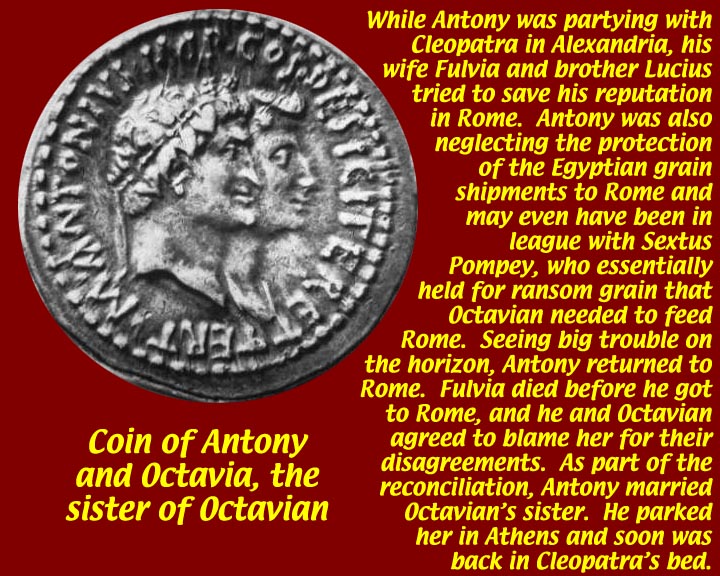
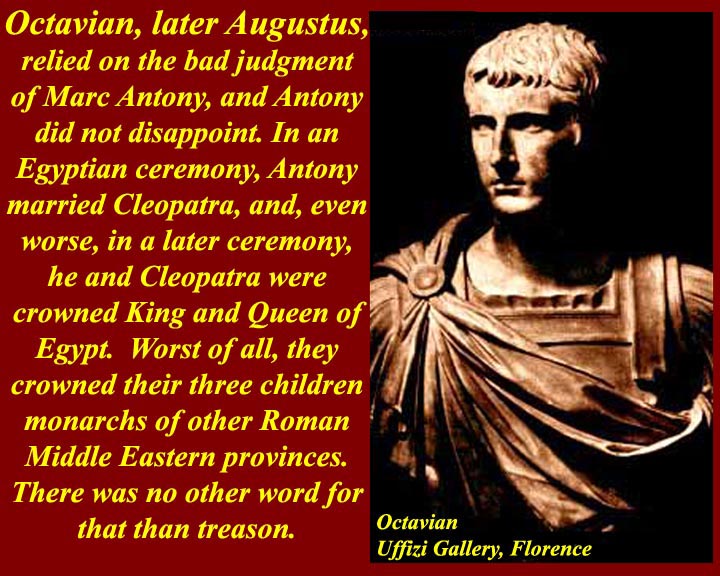
http://www.mmdtkw.org/AU0615ReconcilAnthonyOctavia.jpg
http://www.mmdtkw.org/AU0616aOctavian.jpg
http://www.mmdtkw.org/AU0616bDonationsAlexandria34BC.jpg
Some historians think the marriage was a trap set by Octavian, who certainly knew of Antony's reputation with the ladies and could easily guess that Antony would soon return to Cleopatra. At any rate, Antony and Octavia headed back east with Antony's army. He essentially parked Octavia in Athens and soon was back in Cleopatra's bed in Alexandria.
And Antony proved to be an even greater fool than Octavian had thought.
He married Cleopatra in an Egyptian ceremony and a short time later tried to give the eastern half of provincial Rome to Cleopatra and her children.
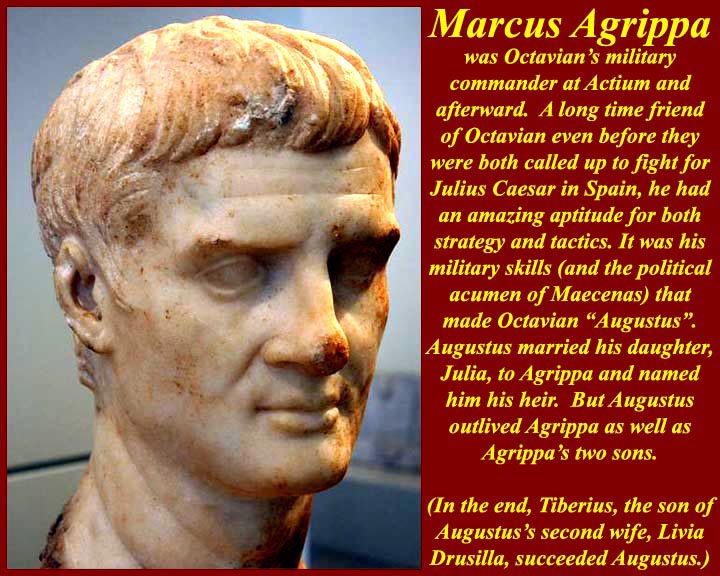
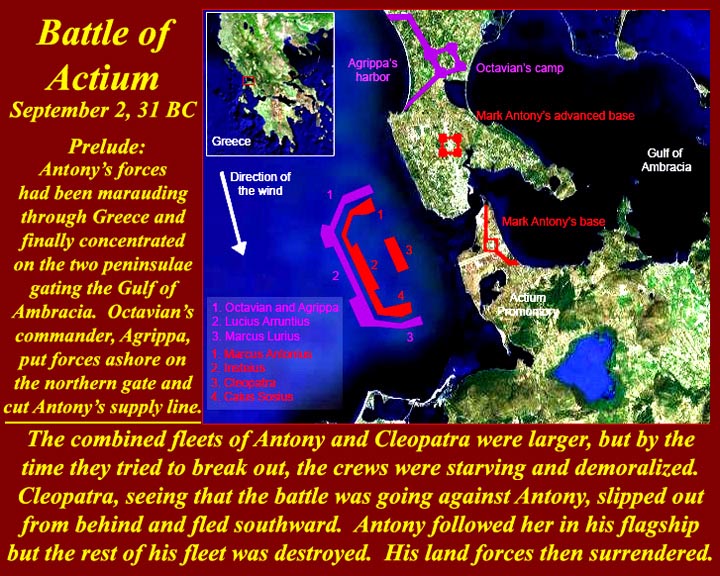
http://www.mmdtkw.org/AU0617Agrippa.jpg
http://www.mmdtkw.org/AU0618BattleActium.jpg
http://www.mmdtkw.org/AU0619CastroBattleActium.jpg
Octavian easily got authorization from the Senate to wage ware against "Egypt", i.e., against Cleopatra, of whom Antony was to be considered an appendage. Antony set up his land forces on the two peninsulae that enclosed the Gulf of Ambracia on the Greek west coast north of the Gulf of Corinth and had his fleet along with the sixty or so ships of Cleopatra's fleet inside the Gulf of Ambracia. Agrippa put Octavians land forces ashore north of the Gulf of Ambracia and his fleet outside the mouth of the Gulf. Agrippa marched south and soon drove Antony's troops off the northern peninsula. Antony's southern camp was then overcrowded and short of supplies, as was his fleet. It was effectively a tight siege, and Antony thought he might escape by sea if he could punch through Octavian's fleet. Antony made his run on September 2 of 31 BC with Cleopatra's fleet to the rear. As he was engaging, Cleopatra's fleet veered off to the south and escaped. Antony pulled his flagship from the line and followed her to Alexandria. His entire fleet at Actium was destroyed and his land forces quickly surrendered. surrendered. It actually wasn't much of a battle.
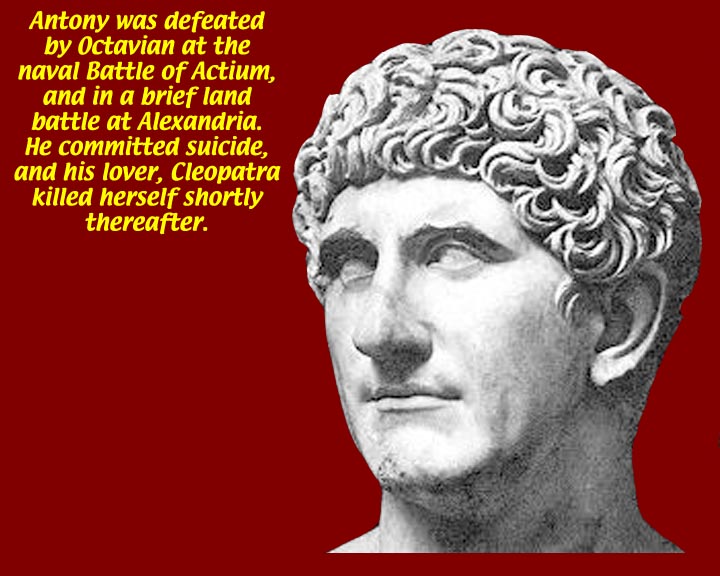
http://www.mmdtkw.org/AU0620SuicideMarcusAntonius1.jpg
http://www.mmdtkw.org/AU0621CleopatraAspArthur.jpg
After a few small engagements around Alexandria, the city fell to Octavian's forces. Antony and Cleopatra committed suicide -- sequentially; Cleopatra at least a month later than Antony.
http://www.mmdtkw.org/AU0622ShakespeareWorm.jpg
Click to see what Shakespeare had to say about "the pretty worm of Nilus".
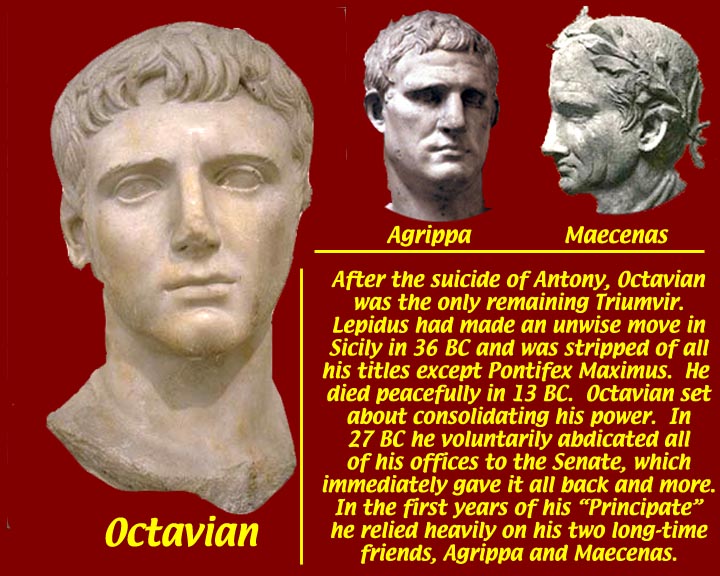
http://www.mmdtkw.org/AU0623OctavianAgrippaMaecenas.jpg
http://www.mmdtkw.org/AU0624AgrippaMaecenas.jpg
Agrippa and Maecenas had been with Octavian since they had all fought together under Julius Caesar at Munda in Spain in 45 BC. After the battle of Actium they quickly settled into peacetime roles in his "Principate" government. Agrippa became the great project coordinator, rebuilding Rome and being groomed to succeed Octavian (now AKA Augustus). Maecenas was Octavians political, cultural, and social adviser.
http://www.mmdtkw.org/AU0625AugustusLivia.jpg
Octavian was the sole ruler of Rome from 30 BC until he died in 14 AD. By that time he had outlived Agrippa and his grandsons -- his choices to succeed himself. That left Tiberius, the son of Livia, who Octavian had married in 39 BC after divorcing Scribonia. Livia was "first lady" throughout the reign of Augustus and outlived him by 15 years. By 29 AD, when she died, she had become a termagant and a thorn in the side of Tiberius, her son. Some ancient historians claimed that Tiberius went to his retreat in Capri to avoid Livia. He did not attend her funeral, instead sending Caligula to deliver the eulogy.
In his long reign, Augustus received many honors, accomplished many things -- too many to go into in a survey course. His own account of his accomplishments is in the Res Gestae Divi Augusti, a translation of which can be found at
http://www.mmdtkw.org/ALRIAncRomeUnit6ResGestaeDiviAugusti.html.
A short chronology of his life and reign is at
http://www.mmdtkw.org/ALRIAncRomOctavianTimeline.html.
The following links and images show some of the things Octavian built in Rome:
http://www.mmdtkw.org/AU0626JuliusCaesarTemple.jpg
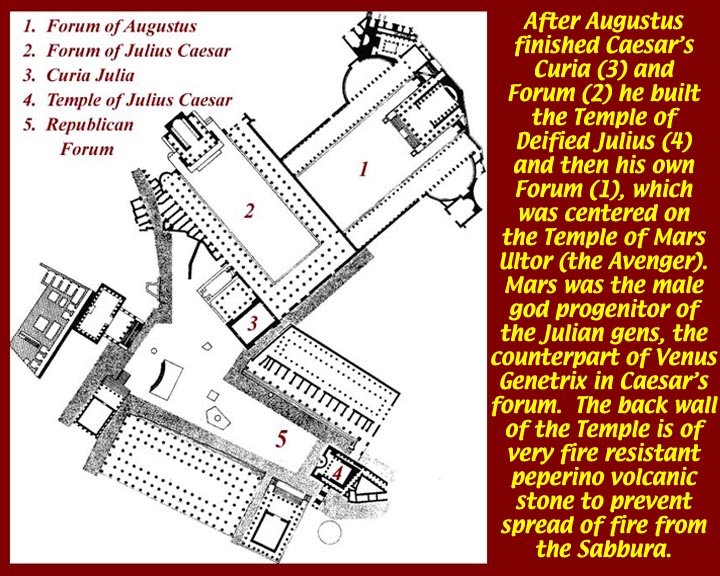
http://www.mmdtkw.org/AU0627aForumAgustus.jpg
http://www.mmdtkw.org/AU0627bForumAugustusModel.jpg
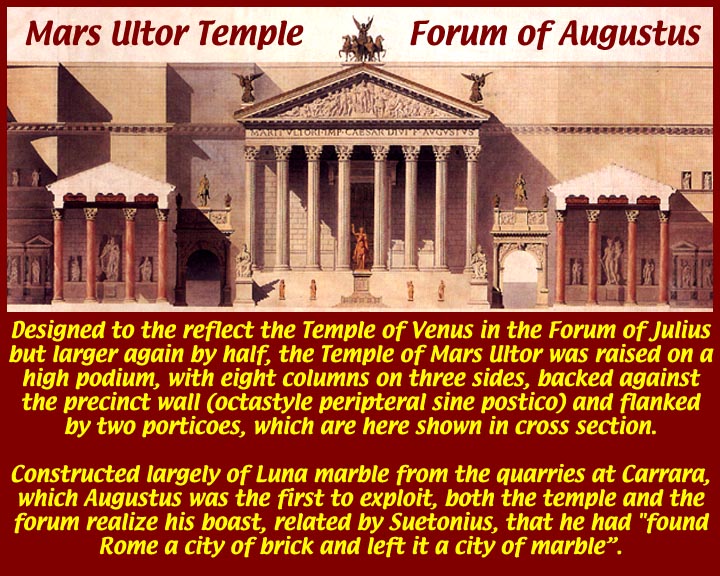
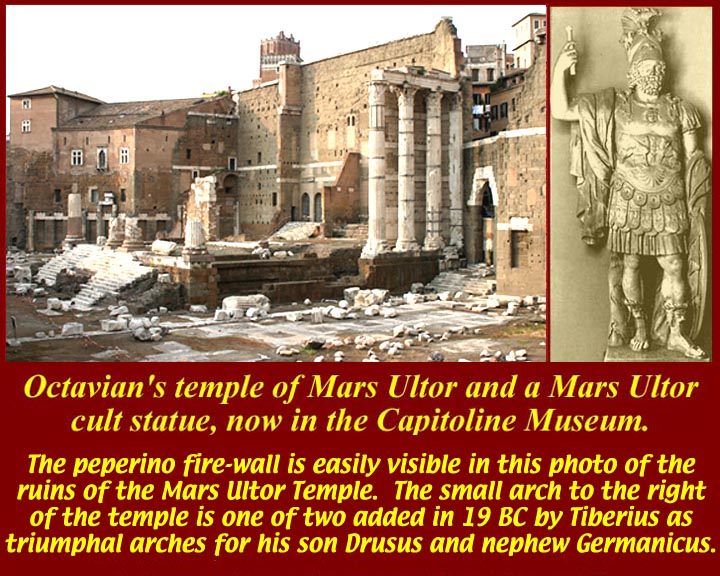
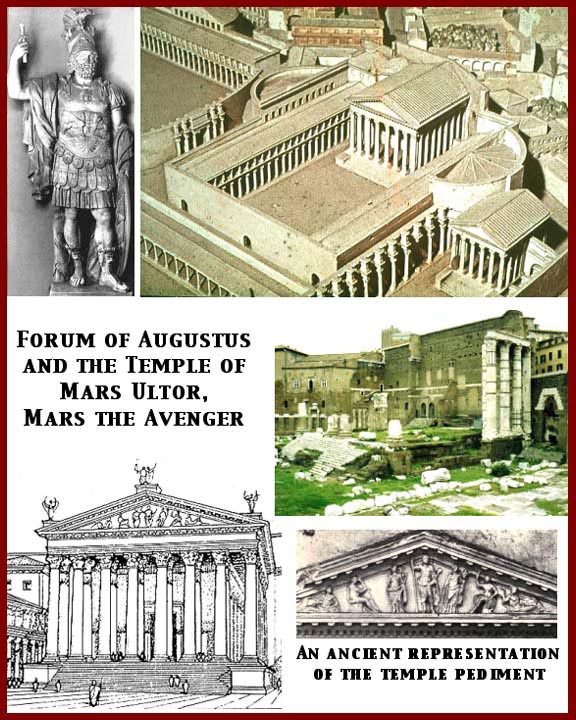
http://www.mmdtkw.org/AU0627cForumAugustusMarsUltor.jpg
http://www.mmdtkw.org/AU0627dMarsUltor.jpg
http://www.mmdtkw.org/AU0627eMarsUltor2.jpg
http://www.mmdtkw.org/AU0627fMarsUltor3.jpg
http://www.mmdtkw.org/AU0628aaAugustanCampusMartius.jpg
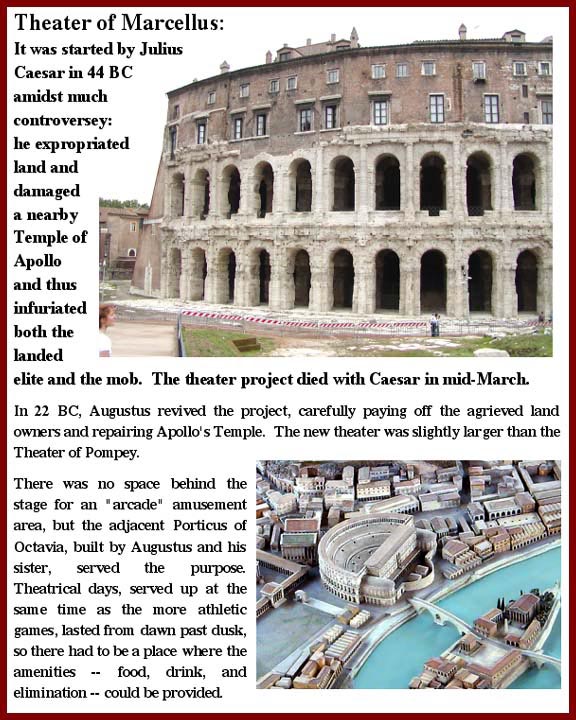
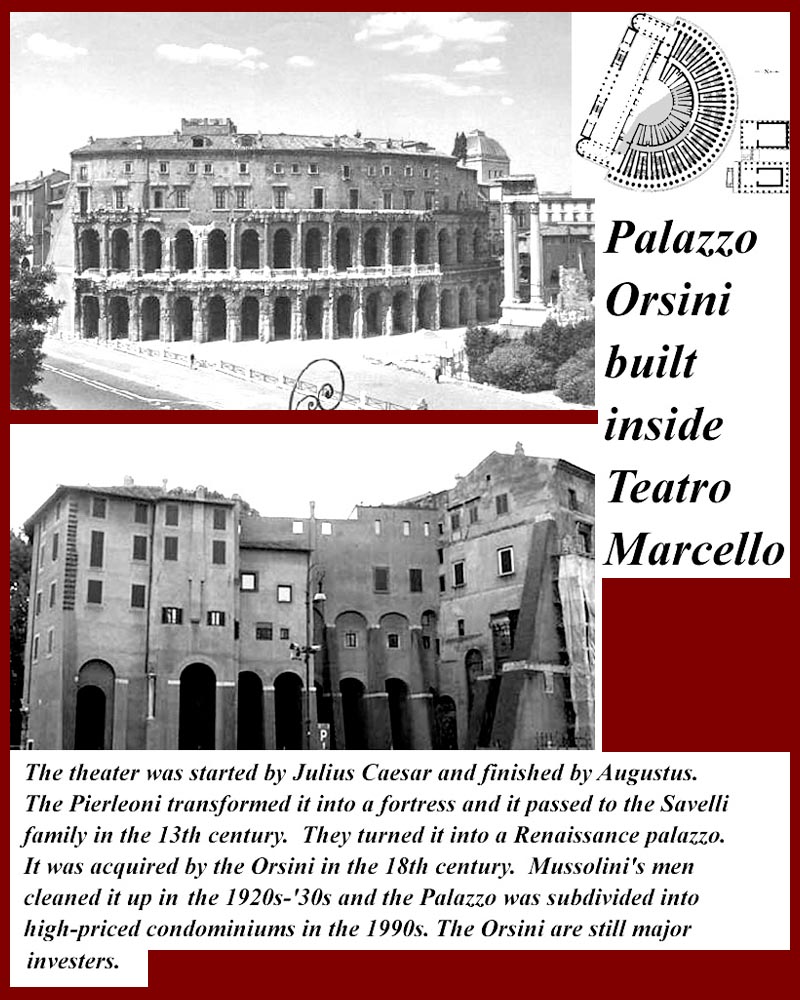
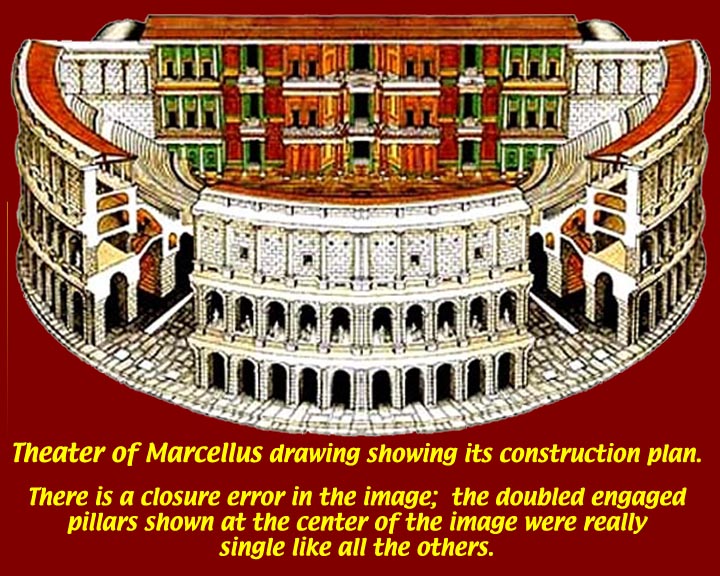
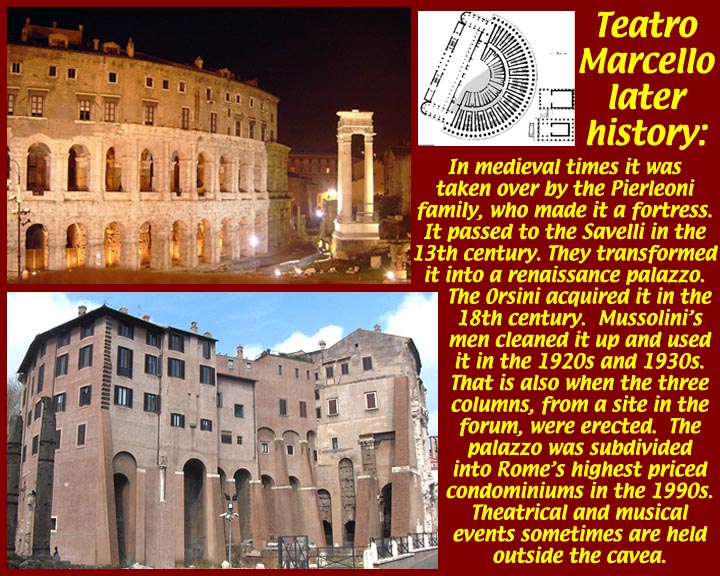
http://www.mmdtkw.org/AU0628aTheaterMarcellus1.jpg
http://www.mmdtkw.org/AU0628bMarcelloOrsini3.jpg
http://www.mmdtkw.org/AU0628cMarcelloRecon.jpg
http://www.mmdtkw.org/AU0628dMarcelloLater.jpg
http://www.mmdtkw.org/AU0628eMarcelloOverhead.jpg
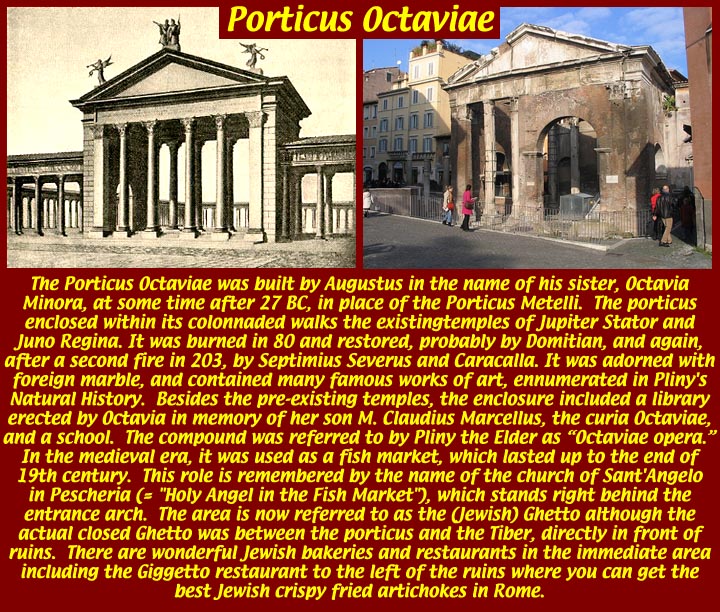
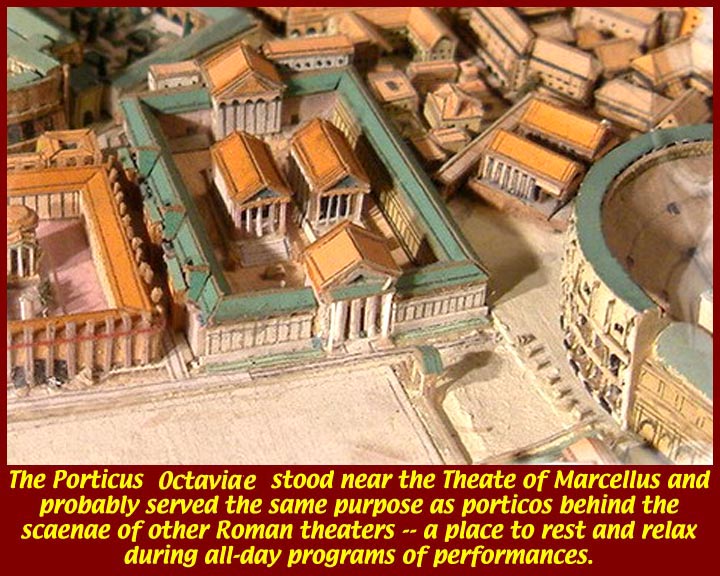
http://www.mmdtkw.org/AU0629aPorticusOctavia.jpg
http://www.mmdtkw.org/AU0629bPorticusOctaviae1.jpg
http://www.mmdtkw.org/AU0629cPorticusOctaviaeCircFlaminius.jpg
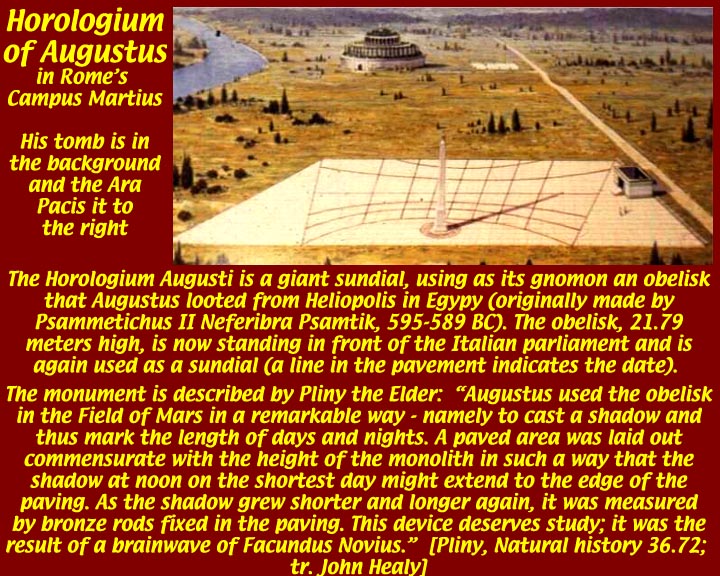
http://www.mmdtkw.org/AU0630aHorologiumAugusti.jpg
http://www.mmdtkw.org/AU0630bHorologiumAugusti.jpg
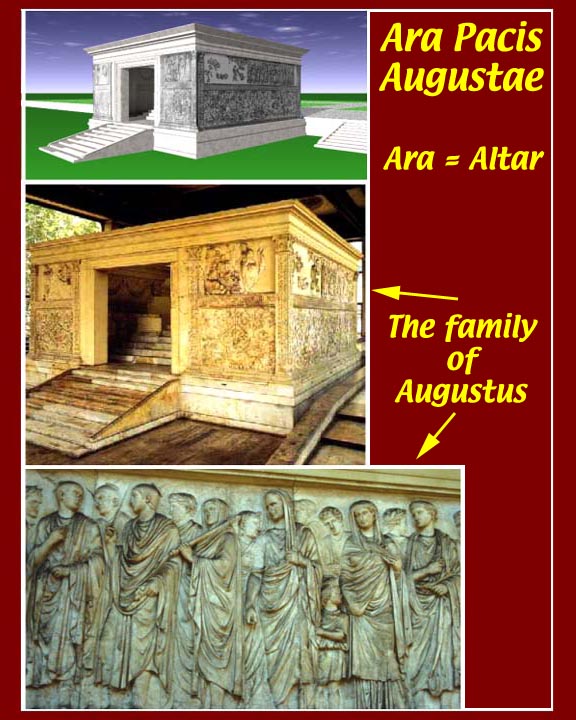
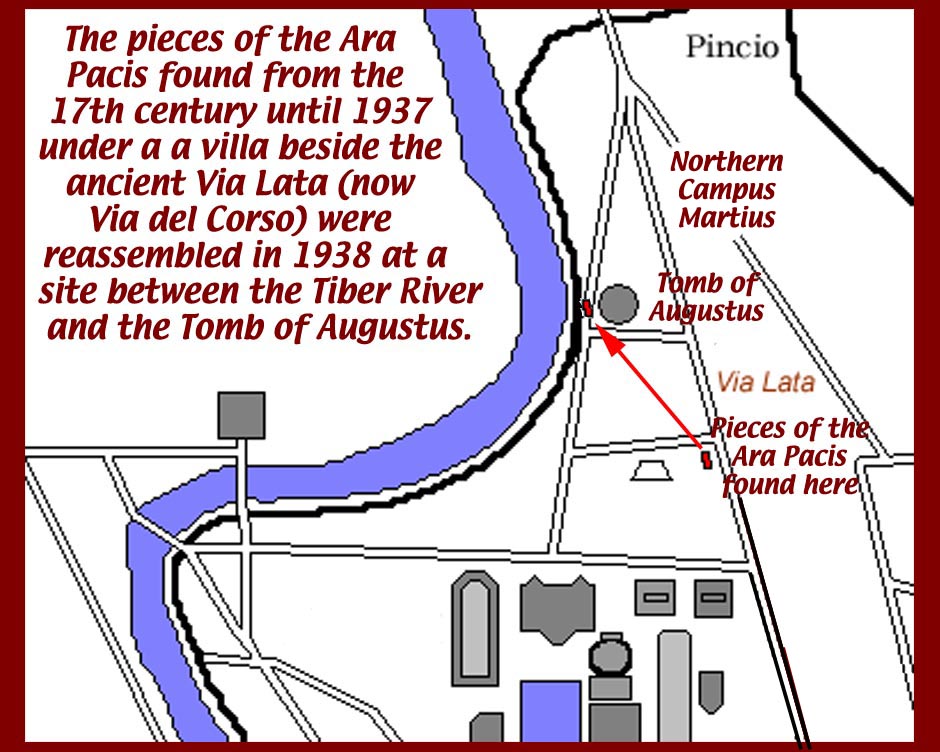
http://www.mmdtkw.org/AU0631aAraPacis.jpg
http://www.mmdtkw.org/AU0631bAraPacislocator1.jpg
http://www.mmdtkw.org/AU0631cAraPacisLocator2.jpg
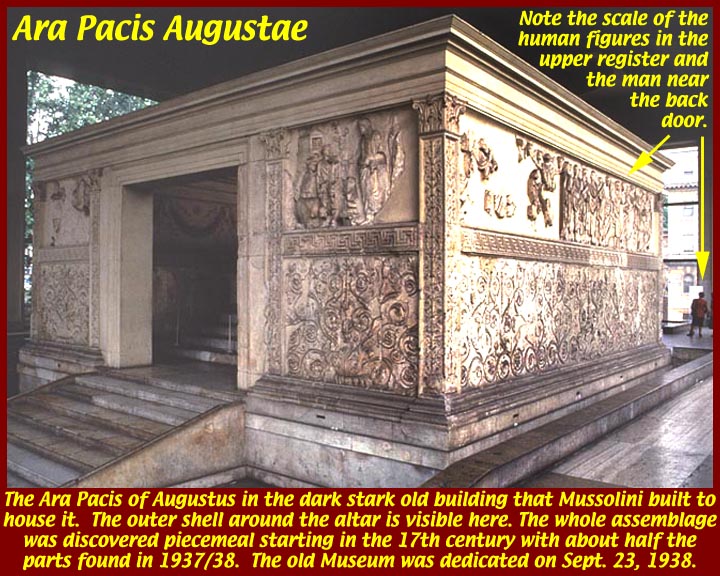
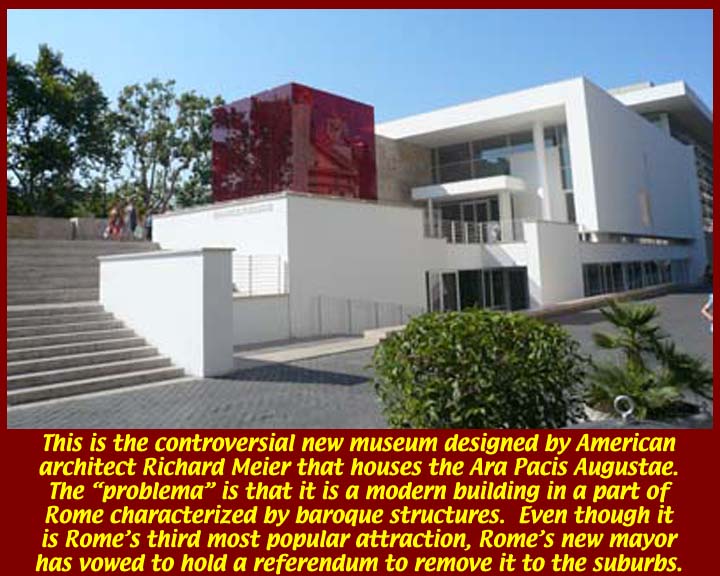
http://www.mmdtkw.org/AU0631dAraPacisOldEnclosure.jpg
http://www.mmdtkw.org/AU0631eAraPacisNewMuseum.JPG
http://www.mmdtkw.org/AU0631fAraPacisBright.jpg
http://www.mmdtkw.org/AU0631gAraPacisProcession.jpg
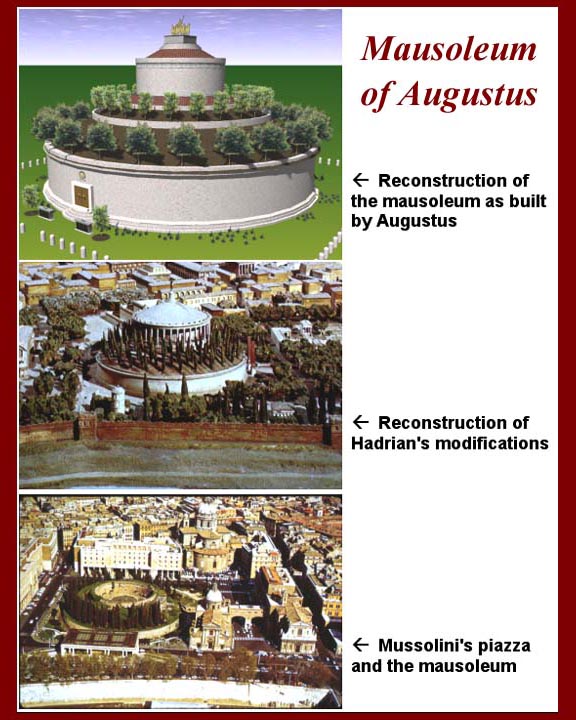
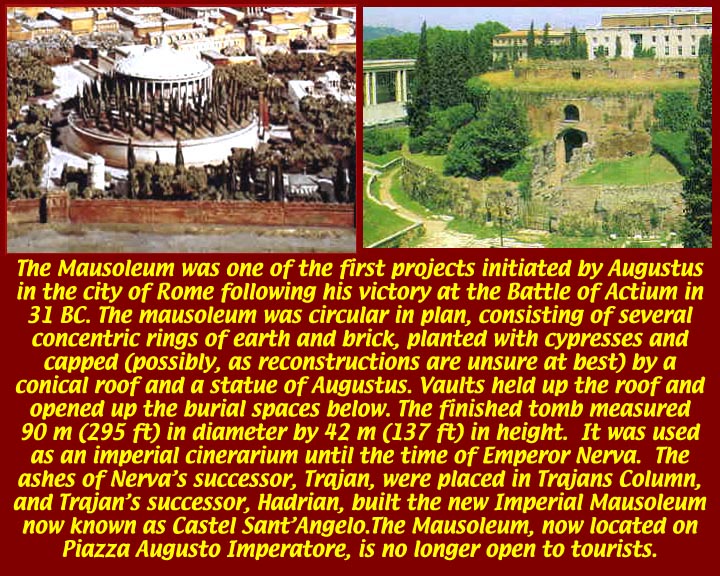
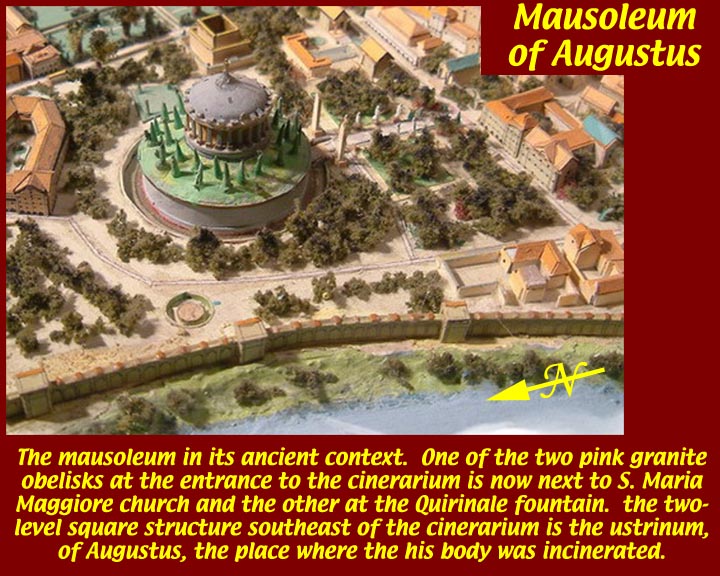
http://www.mmdtkw.org/AU0632aMausoleumAugustus.jpg
http://www.mmdtkw.org/AU0632bAugustusTomb.jpg
http://www.mmdtkw.org/AU0632cAugustusTombAncientContext.jpg
http://www.mmdtkw.org/AU0632dAugustusTombToday.jpg
Images of Octavian Augustus:
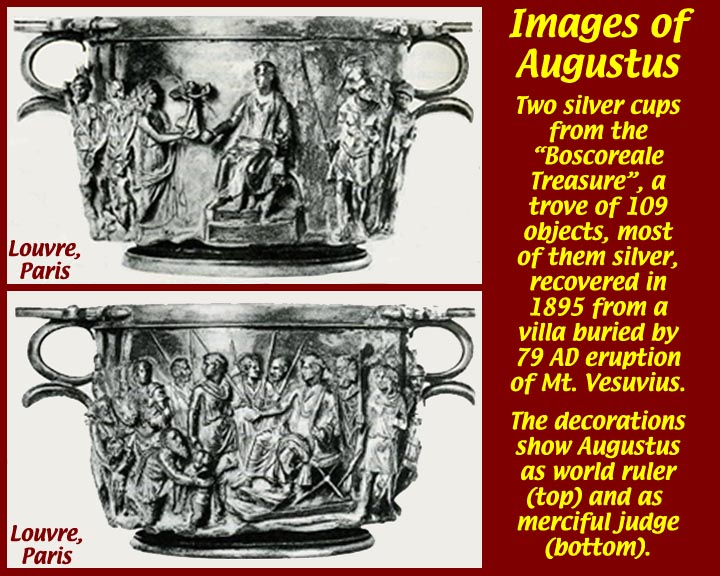
http://www.mmdtkw.org/AU0633aAugustusSilverCups.jpg
http://www.mmdtkw.org/AU0633bPharaohAugustus.jpg
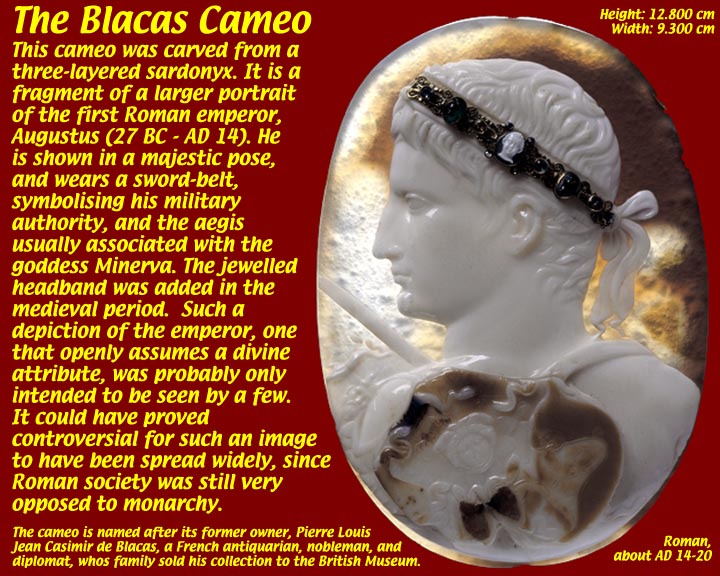
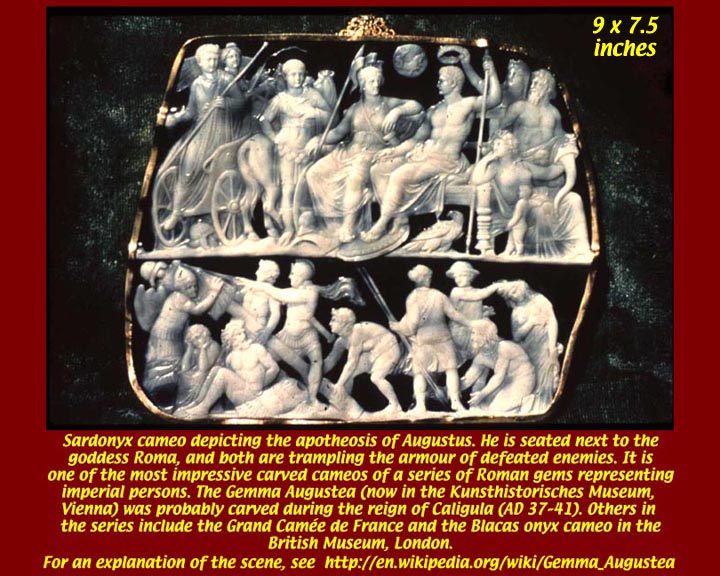
http://www.mmdtkw.org/AU0633cBlacasCameo.jpg
http://www.mmdtkw.org/AU0633dGemmaAugustae.jpg
http://www.mmdtkw.org/AU0633eGrandCameeDeFrance.jpg
Tiberius -- counted as the first Julio-Claudian emperor (the one who brought the "Claudian" into the mix), a great general, but, later in life, a layabout pederast (if we can believe Tacitus, Suetonius, and Dio Cassius).
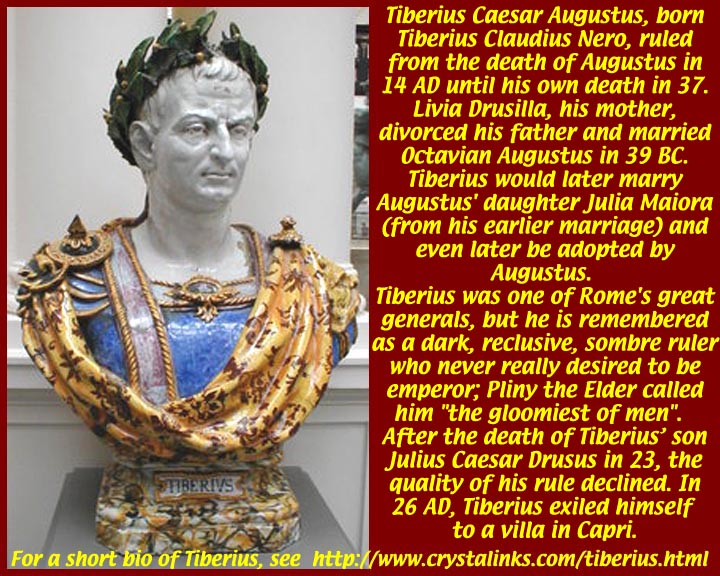
http://www.mmdtkw.org/AU0634aTiberius.jpg
http://www.mmdtkw.org/AU0634bSejanusTiberiusAs.jpg
Tiberius was Livia's son by a Claudian named Tiberius Claudius Nero. His maternal grandfather was also a Claudian, but he had been adopted into the Livius gens, whence her name, Livia. Tiberius was one of Rome's greatest generals, whose campaigns in Pannonia, Illyricum, Rhaetia and Germania laid the foundations for the northern frontier. But he came to be remembered as a dark, reclusive, and sombre ruler who never really desired to be emperor; Pliny the Elder called him tristissimus hominum, "the gloomiest of men". After the death of Tiberius’ son Julius Caesar Drusus in 23, the quality of his rule declined and ended in a terror. In 26, Tiberius exiled himself from Rome and left administration largely in the hands of his unscrupulous Praetorian Prefects Lucius Aelius Sejanus and Quintus Naevius Sutorius Macro. Caligula, Tiberius’ adopted grandson, succeeded the Emperor upon his death.
http://www.mmdtkw.org/AU0634dVillaJovisTiberius.jpg
Tiberius lived out his years at his Villa Jovis in Capri, a multi-level palace at the northeastern tip of the island. By all accounts he was a Sadistic bisexual pederast in his later years. He is said to have kept his adopted son, Caligula with him and taught him the ropes.
Caligula's father, Germanicus, was the adopted son of emperor Tiberius and one of Rome's most beloved generals. The young Gaius earned his nickname, meaning "little boots" (soldiers' boots were caligae) , while traveling with his father on military campaigns in Germania. When Germanicus died in Antioch in 19, his mother Agrippina the Elder returned to Rome with her six children, where she became entangled in an increasingly bitter feud with Tiberius. During the course of the 20s and 30s, many of Caligula's relatives, including Agrippina and two elder brothers, died in mysterious circumstances. Caligula withdrew to the island of Capri in 31, where Tiberius himself had retired since 26, and eventually succeeded his adoptive grandfather upon his death on 16 March 37.
http://www.mmdtkw.org/AU0634eTiberiusBoscorealeCups.jpg
Images of Tiberius on two cups recovered from the Boscoreale Villa, buried under ash from the 79 AD Vesuvius eruption.
Caligula -- the second Julio-Claudian Emperor: misreported, explainably psychotic, or just plain evil.
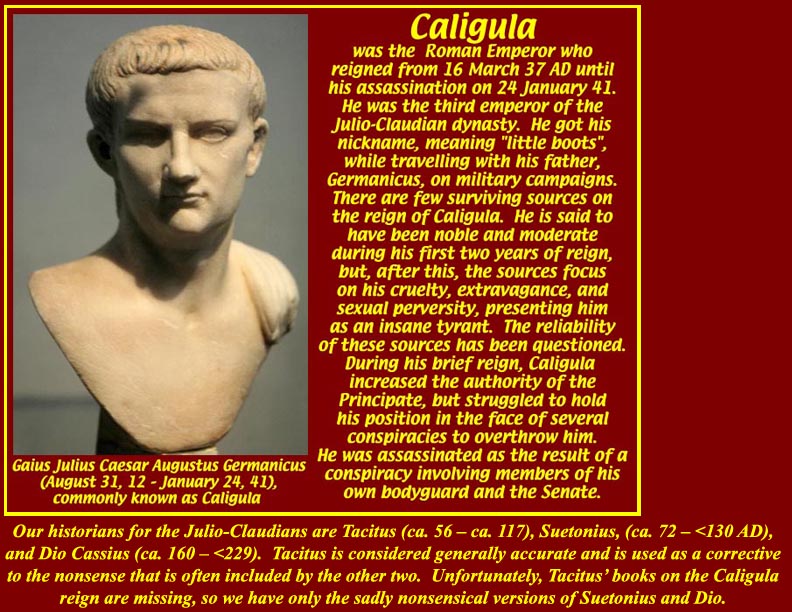
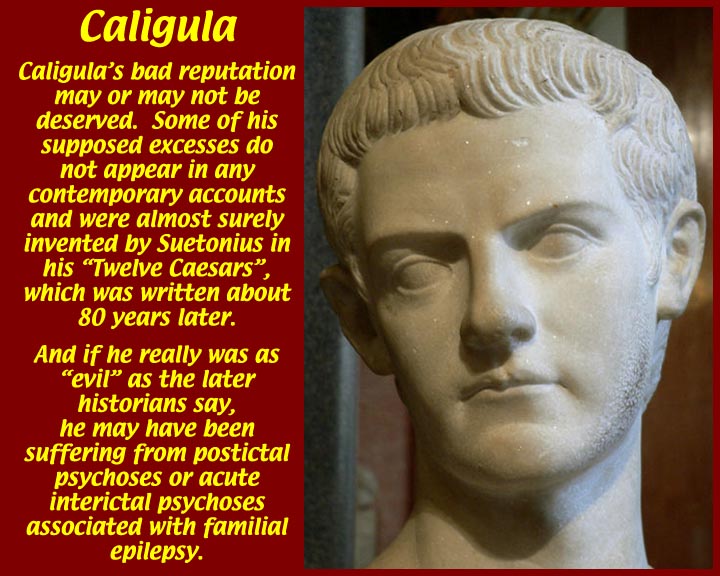
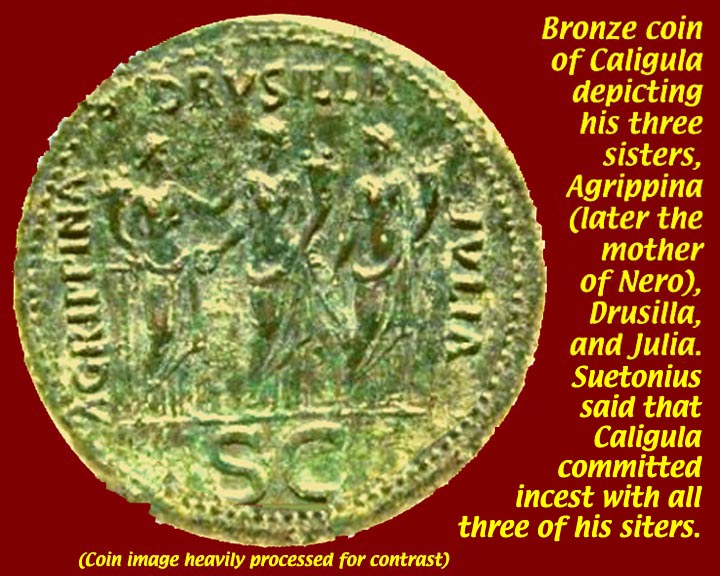
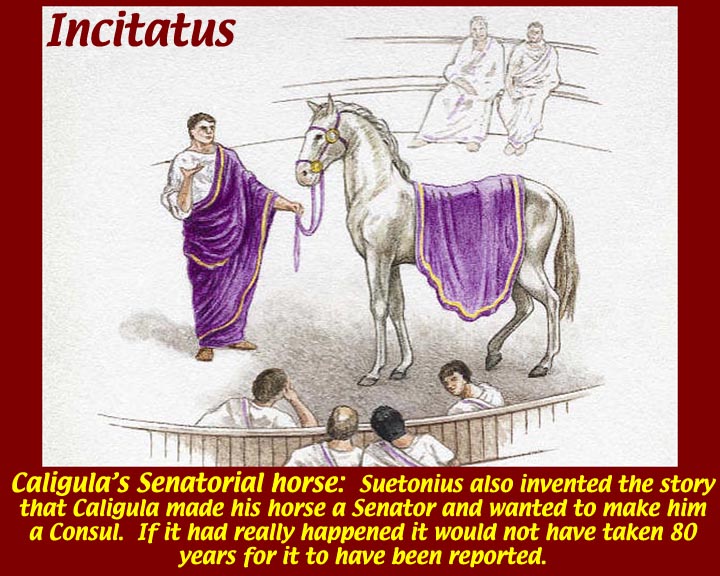
http://www.mmdtkw.org/AU0635aCaligula.jpg
http://www.mmdtkw.org/AU0635bCaligulaEpilepsy.jpg
http://www.mmdtkw.org/AU0635cCaligulaSisters.jpg
http://www.mmdtkw.org/AU0635dCaligulaIncitatus.jpg
http://www.mmdtkw.org/AU0635eCaligulaBlueMovie.jpg
Historians have not been kind to Caligula. Suetonius and Dio Cassius savaged him in their much later accounts, and, unfortunately, the books by Tacitus on the period of Caligula's rule are missing. Tacitus is always the most important of the three historians because he was much closer in time to his subjects, and he was less prone to accept the rumors, extravagances, and outright lies that plague the works of Suetonius and Dio. Lacking the controlling sensibility of Tacitus, many modern historians, novelists, dramatists, and yes, even Hollywood producers simply accept what Suetonius and Dio fed them and regurgitate it as if it were fact. We really know very little about the reign of Caligula except that he was immensely popular with the people of Rome, especially after the excesses of Sejanus in the name of Tiberius. Popularity with the Roman mob is no great recommendation, but it goes a long way toward explaining vilification of Caligula by later historians, who were subservient to the Senatorial (military/land owner) class.
Modern medical science has tried to interpret what is said to have been Caligula's pattern of behavior. It the stories about his excesses are true, it is possible that he was suffering from interictal or postictal psychoses associated with untreated familial epilepsy. It is fairly certain that Caligula, like Julius Caesar, was an epileptic, and there are other probable cases in the Julio-Claudian line.
On 24 January 41, Caligula was assassinated in a conspiracy involving his own bodyguards and the Roman Senate. The conspirators' attempt to use the opportunity to restore the Roman Republic was thwarted, mainly because several of the senators wanted to succeed Caligula as emperor rather than really restore the Republic. While the Senate argued, the Praetorian Guard, fearing that a new republican government might disband their unit and end their soft urban duties, declared Caligula's uncle Claudius emperor in his place. As it happened, Claudius was the only living adult male of the Julio-Claudian line.
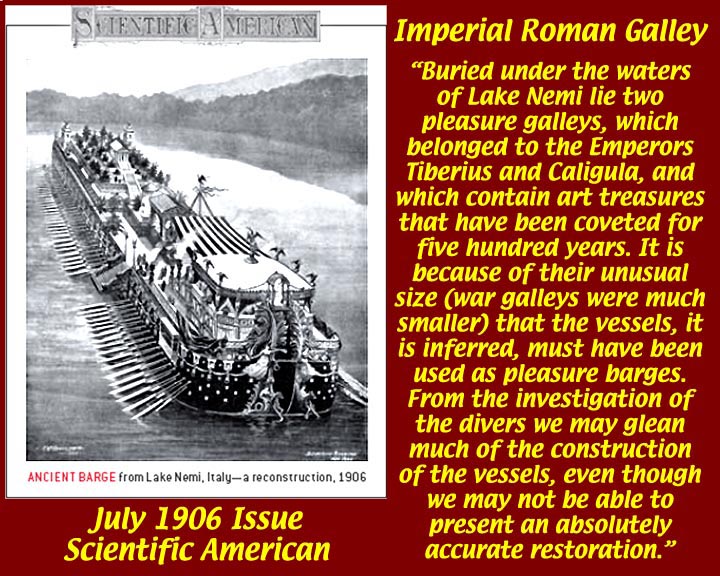
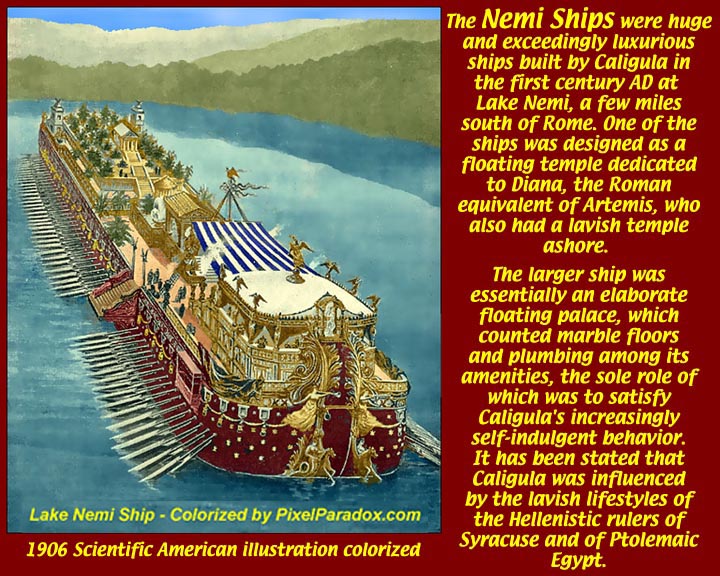
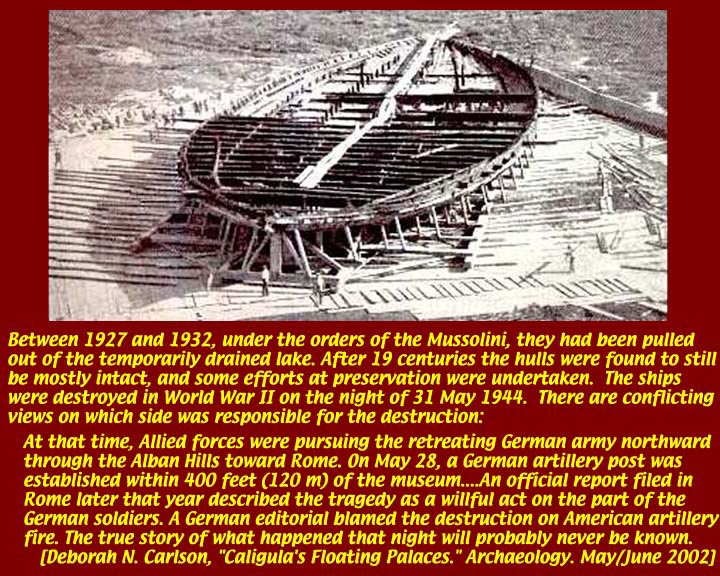
http://www.mmdtkw.org/AU0635fBargeNemiReconst.jpg
http://www.mmdtkw.org/AU0635gNemiShipColor.jpg
http://www.mmdtkw.org/AU0635hNemiShipRecovery1.jpg
http://www.mmdtkw.org/AU0635iNemiShipRecovery2.jpg
Among the more intriguing artifacts of the reign of Caligula were two huge boats that were found sunk in Lake Nemi, south of Rome (just south of Lake Albano where the Pope has his summer residence, Castel Gandolfo. The larger of the two appears to have been Caligula's pleasure boat and the smaller a floating Temple of Diana Nemorensis. They were probably also used by Claudius.
After sinking in antiquity they were not totally forgotten. In 1446, Cardinal Prospero Colonna and the architect Leon Battista Alberti started searching based on oral tradition. Divers located the sunken ships 10 fathoms down, but it was too deep for salvage.
New attempts to raise objects were made in 1535, 1827 and 1895. In 1906 a US National Geographic expedition surveyed the boats and produced detailed drawings. Finally, in 1929-32, the lake was drained by Guido Ucelli (working for Mussolini), and the ships were found and salvaged. Only the lower parts of the hulls remained. Many artefacts and two anchors were found, one 4 m long in iron and one 5 m long made of lead and wood. The ships were destroyed by fire in 1944 -- the allies blamed the Germans and the Germans blamed the allies. The surviving parts (bronze fittings) are now displayed in the Palazzo Massimo branch of the Italian National Museum in Rome. A full-scale replica is under construction.
Claudius -- the third Julio-Claudian: historian, linguist, self confessed practitioner of dissimulation, and a bad judge of wives.
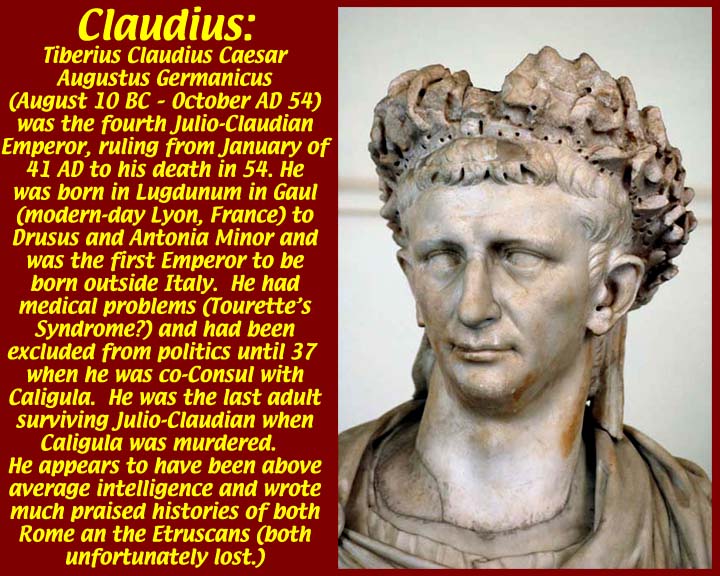
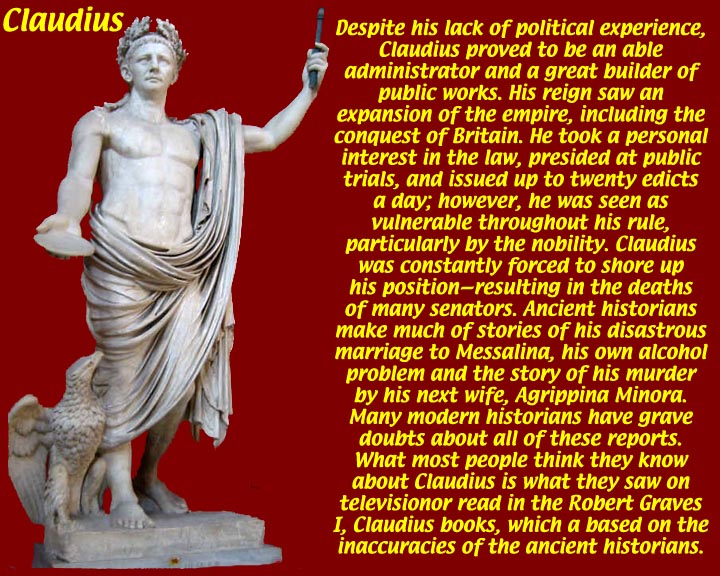
http://www.mmdtkw.org/AU0636aClaudiusIdentifier.jpg
http://www.mmdtkw.org/AU0636bClaudius.jpg
http://www.mmdtkw.org/AU0636cIClaudius.jpg
If you have seen the I, Claudius TV series you know that Messalina was a girl gone wild and that Agrippina, the last wife of Claudius, slipped him the poisoned mushrooms. The former, the stories about Messalina might have been true -- she appears to have been involved in a plot to replace Claudius with a Roman Senator, Gaius Silius, whom she had bigamously married. Claudius was informed and he had Messalina and Silius killed. Shortly thereafter, he married Agrippina and adopted her son, Nero, as his son and heir.
Much has been made of the fact that Claudius chose Nero as his heir over his own son (with Messalina), Britannicus. There were, in fact good reasons for this choice: Britannicus was considerably younger and, more importantly, was epileptic. Claudius was himself disabled, but was apparently not epileptic. The latest modern diagnosis is that he had a form of Tourette's Syndrome, a condition which often improves after puberty. Claudius himself said that he had exaggerated his symptoms so that he would be considered harmless.
Claudius had received no leadership training when he was thrust onto the throne. He was more scholarly than anything else having written on the history of Rome, the history of the Etruscans, and analyses of the Etruscan language (all lost, unfortunately). He was said to have been easily duped by his freedmen and his wives, but other historians say that he just wasn't interested in the administration of Rome -- that he wasn't duped; that he knew but didn't care.
Finally, there is the question of those poisoned mushrooms. Agrippina Minora already had secured the succession of Nero, and, having good administrative skills, she was already running Rome while Claudius was often in his cups. She had nothing to gain by killing Claudius and putting her teen-aged son on the throne. But this is the way it might have happened: Claudius was very fond of "forest mushrooms" -- boletus edulis, which are now called "porcini" mushrooms (in Italian) or Cepe (in French. All boletus mushrooms contain toxins, but the edulis variety has very little. Some people are more sensitive to boletus toxins than others, and sensitivity is increased when they are eaten with alcohol. Claudius may simply have eaten too many porcini with his wine and died as a result.
Or perhaps he just died of chronic alcohol overdoses.
http://www.mmdtkw.org/AU0636dGemmaClaudia.jpg
Germanicus and Agrippina Maiora, parents of Caligula right, and Claudius with Agrippina Minora, mother of Nero, left.
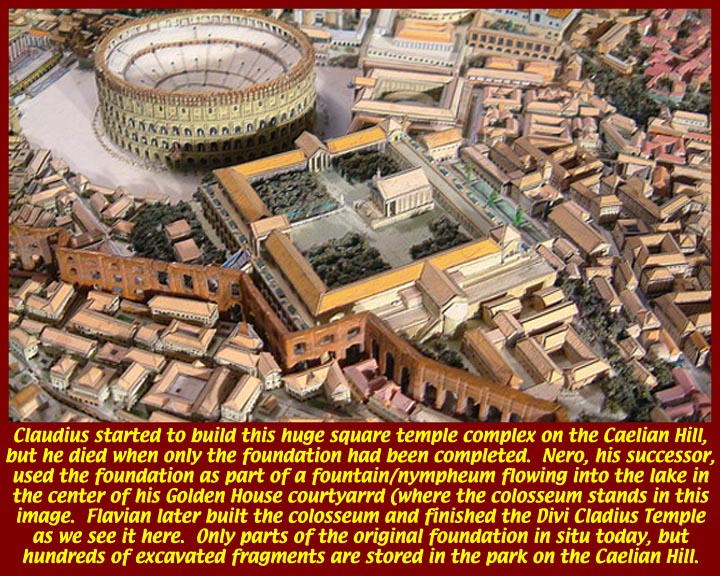
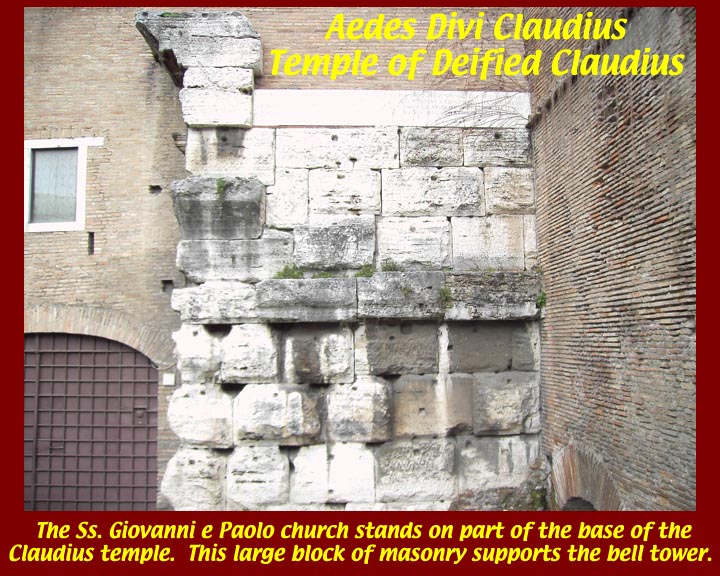
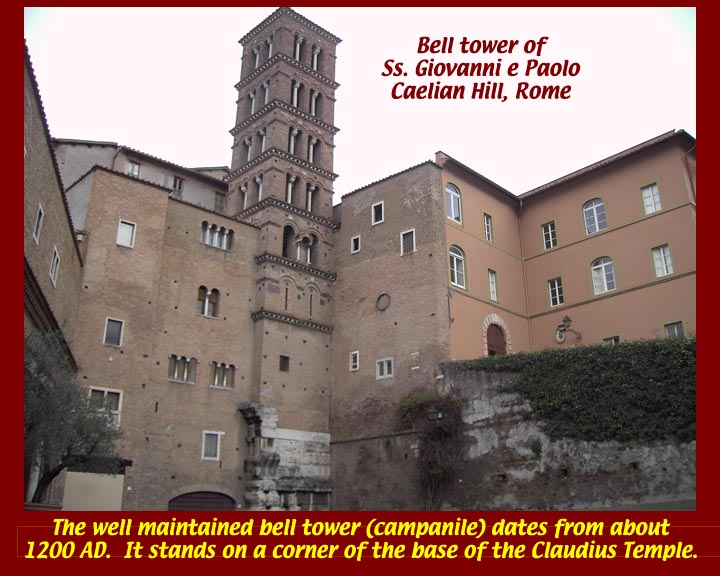
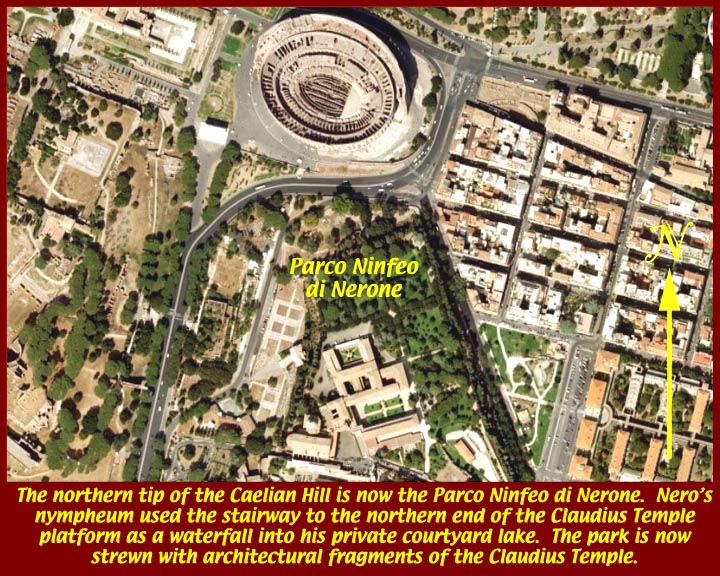
http://www.mmdtkw.org/AU0636eDiviClaudiusTemple.jpg
http://www.mmdtkw.org/AU0636fClaudiusTempleCaelian.jpg
http://www.mmdtkw.org/AU0636gClaudiusTempleCampanile.jpg
http://www.mmdtkw.org/AU0636hClaudiusTempleLocator.jpg
http://www.mmdtkw.org/AU0636iParcoNinfeoFragments.jpg
Claudius started to build a huge temple complex on the Caelian Hill but only finished leveling the platform of the complex and the podium for the temple itself before he died. Nero made the whole assemblage into a Nymphaeum, but the next Dynasty, the Flavians converted it all back into a temple dedicated to Deified Claudius. Little remains except the temple podium which was used as the base of the medieval bell tower (campanile) of the Church of Saints Peter and Paul.
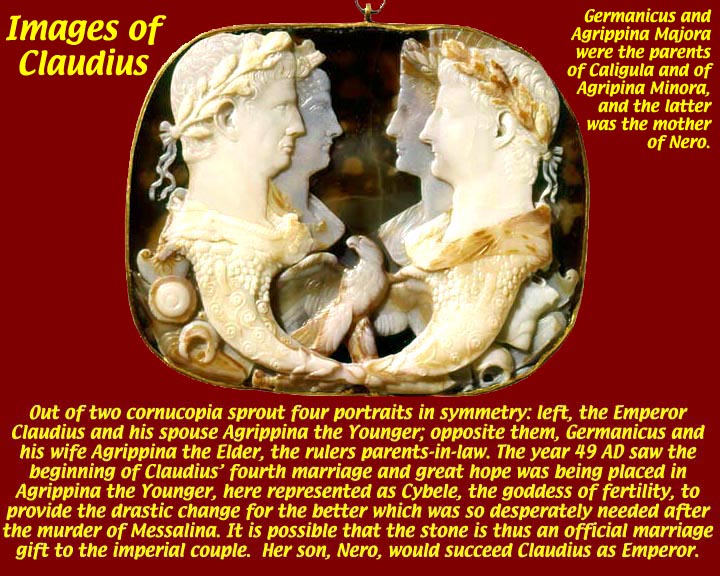
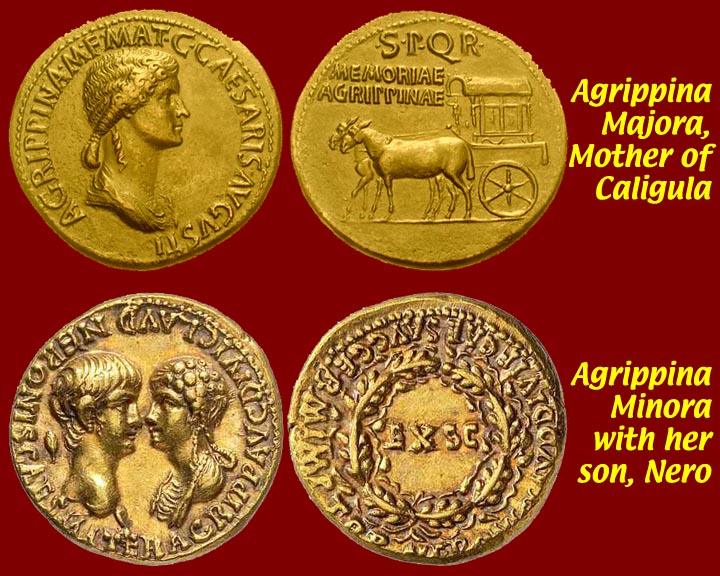
http://www.mmdtkw.org/AU0636jGemmaClaudia.jpg
http://www.mmdtkw.org/AU0636kAgrippinaMandm.jpg
http://www.mmdtkw.org/AU0637aAgrippinas.jpg
More images of the Agrippinas. The obverse of the lower coin in the center image, issued by Nero, shows Agrippina Minora with her son.
Nero -- fourth Julio-Claudian emperor: Mama's boy, mama's killer, cultural promoter, maligned by historians, maybe as bad as they say.
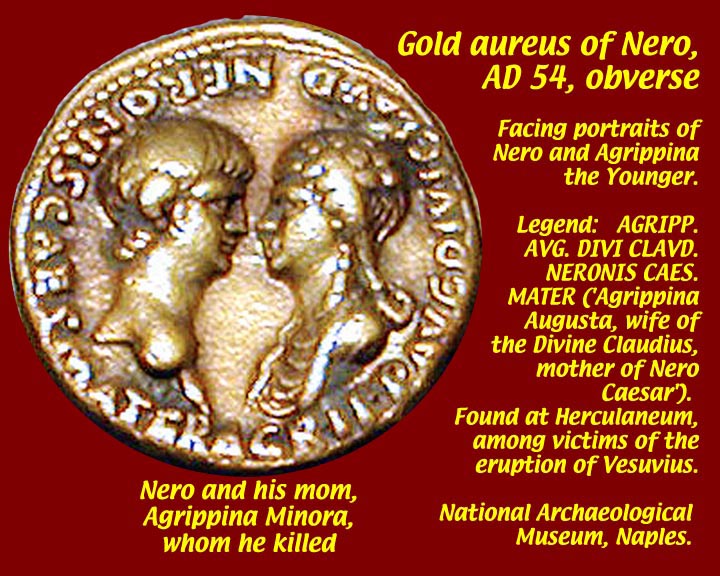
http://www.mmdtkw.org/AU0637bCoinNeroAgrippina.jpg
http://www.mmdtkw.org/AU0637cNeroAgrippina.jpg
Another Nero Agrippina gold aureus coin, struck with a different die, and a statue of Nero being given a victors crown by Agrippina, from the Domus Aurea (-- the one there now is a copy.)
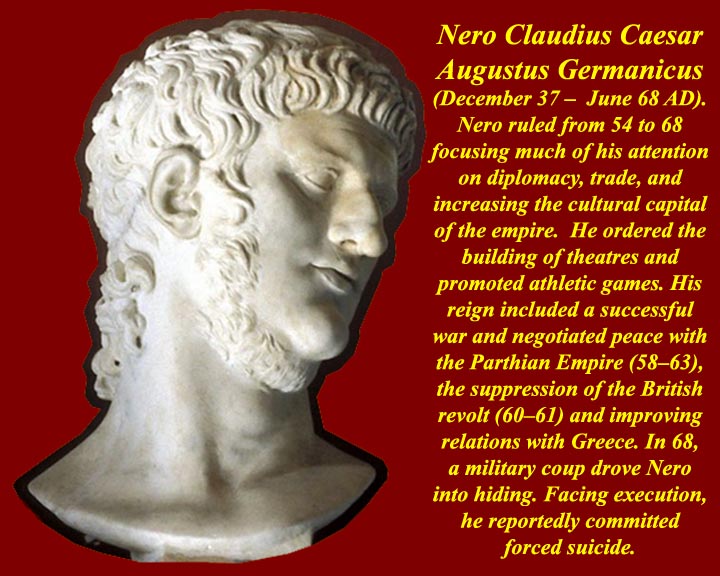
http://www.mmdtkw.org/AU0637dNero1.jpg
http://www.mmdtkw.org/AU0637eNeroGlyptothekMunich.jpg
Once again, there is some dispute about the reliability of reports of Nero's dastardly deeds. Most historians agree that he was more interested in diplomacy, trade, and the arts than in the traditional Roman war-mongery. He played to the people rather than to the Senate. Later historians said he scandalized Rome by singing and play-acting and participating in sports, including the Olympics (where he won every event, of course). But those scandalized Romans were the Senators, who valued, above all, dignitas.
Nero ruled from 54 to 68. He ordered the building of theaters and promoted athletic games. His reign included a successful war and negotiated peace with the Parthian Empire (58–63), the suppression of the British revolt (60–61) and improving relations with Greece. In 68 a military coup drove Nero into hiding. Facing execution, he reportedly committed forced suicide.
Nero's rule is often associated with tyranny and extravagance. He is known for a number of executions, including those of his mother and adoptive brother: as the emperor who "fiddled while Rome burned": and as an early persecutor of Christians. This view is based upon the main surviving sources for Nero's reign -- Tacitus, Suetonius and Cassius Dio. Few surviving sources paint Nero in a favorable light. Some sources, though, portray him as an emperor who was popular with the Roman people, especially in the East.
The study of Nero is problematic as some modern historians question the reliability of ancient sources when reporting on Nero's alleged tyrannical acts.
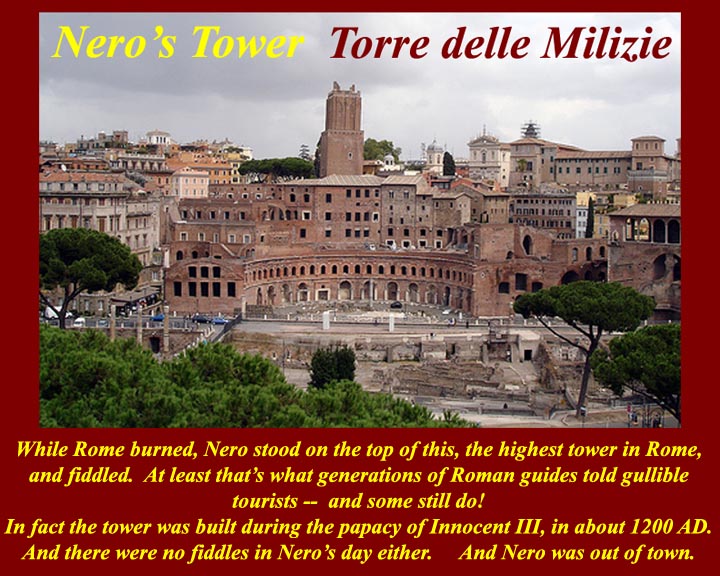
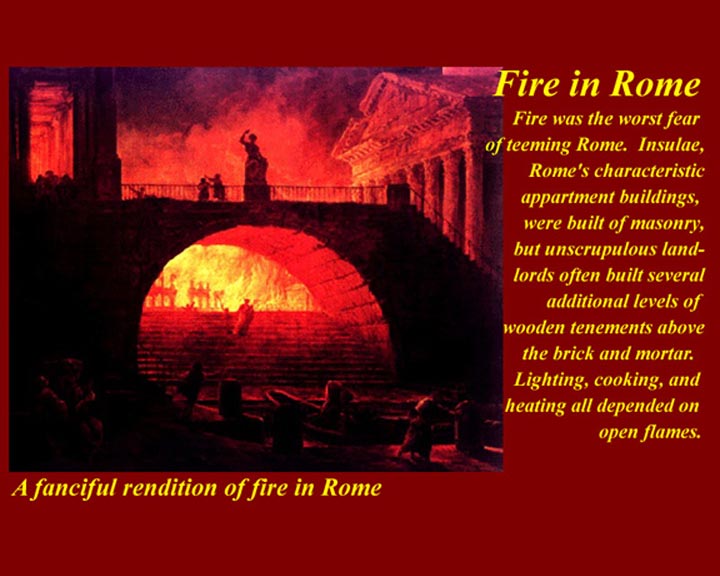
http://www.mmdtkw.org/AU0638aFauxNeroTower.jpg
http://www.mmdtkw.org/AU0638bFireInRome.jpg
http://www.mmdtkw.org/AU0638cRomeFireInsulae.jpg
Mrs. Catherine O'Leary's cow kicked over a lantern in a shed behind DeKoven Street and started the fire that burned four square miles of Chicago in October of 1871 . Michael Ahern, the Chicago Republican reporter who created the cow story, admitted in 1893 that he had made it up because he thought it would make colorful copy. Various reporters also have lied over the centuries about the great fire that burned in Rome for five days after July 18, 64 AD. We know that some of what the "primary sources" swear to is lies because the primary sources are nowhere near consistent.
According to Tacitus, who was seven years old at the time of the fire, it spread quickly and burnt for five days. It completely destroyed four of fourteen Roman districts and severely damaged seven. The only other historian who lived through the period and mentioned the fire is Pliny the Elder who wrote about it in passing. Other historians who lived through the period (including Josephus, Dio Chrysostom, Plutarch and Epictetus) make no mention of it. The only other account on the size of fire is an interpolation in a forged Christian letter from Seneca to Paul: "A hundred and thirty-two houses and four blocks have been burnt in six days; the seventh brought a pause". This account implies less than a tenth of the city was burnt. Rome contained about 1,700 private houses and 47,000 apartment blocks.
It was said by Suetonius and Cassius Dio that Nero sang the "Sack of Ilium" in stage costume while the city burned. However, Tacitus' account places Nero in Antium at the time of the fire. Tacitus said that Nero playing his lyre and singing while the city burned was only rumor. Popular legend remembers Nero playing the fiddle while Rome burned, but this is an anachronism as the instrument was invented a thousand years later.
According to Tacitus, upon hearing news of the fire, Nero rushed back to Rome to organize a relief effort, which he paid for from his own funds. After the fire, Nero opened his palaces to provide shelter for the homeless, and arranged for food supplies to be delivered in order to prevent starvation among the survivors. In the wake of the fire, he made a new urban development plan. Houses after the fire were spaced out, built in brick, and faced by porticoes on wide roads. Fire escapes and fire-fighting platforms were mad mandatory on high buildings.
Nero also built a new palace complex known as the Domus Aurea in an area cleared by the fire. The size of this complex is debated (from 100 to 300 acres). To find the necessary funds for the reconstruction, tributes were imposed on the provinces of the empire, i.e., not in the city of Rome.
It is uncertain who or what actually caused the fire—whether accident or arson. According to Tacitus, some in the population held Nero responsible. To diffuse blame, Nero targeted the Christians. Christians confessed to the crime, but it is unknown if these were false confessions induced by torture. Also, the passage is unclear what the Christians confessed to—whether arson or being Christians. According to Tacitus, Nero ordered Christians to be thrown to dogs, while others were crucified or burned to serve as torches.
Suetonius and Cassius Dio favor Nero as the arsonist with an insane desire to destroy the city as his motive. However, major, accidentally started fires were common in ancient Rome. In fact, Rome burned again under Vitellius in 69 and under Titus in 80.
Christian traditions say that the Christian saints, Peter and Paul, were martyrs in Nero's post-fire persecution. The Christian tradition of the presence of Peter and Paul in Rome at the appropriate time goes back to the about 95 AD but claims of their martyrdom there do not appear until later. The tradition is universal among Christians, but actual evidence, documentary of otherwise, is weak to the point of vanishing.
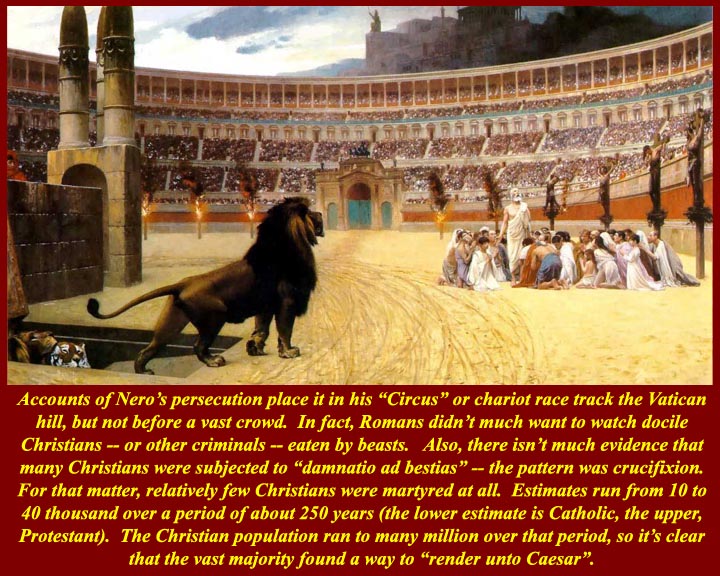
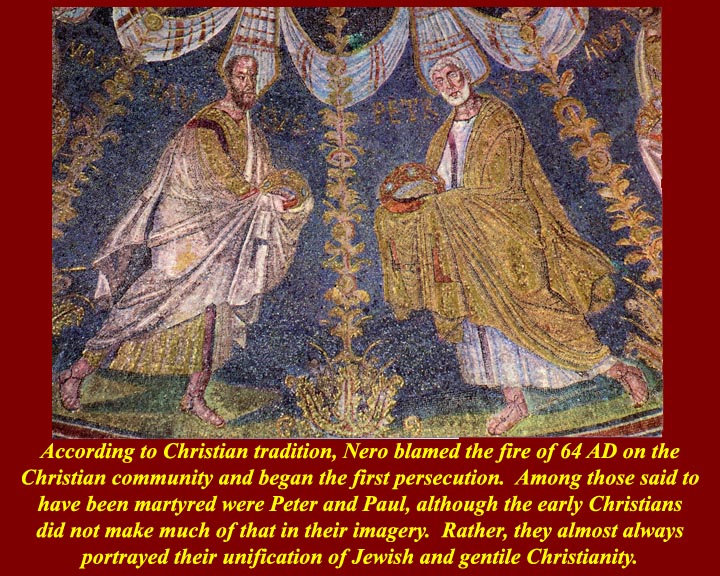
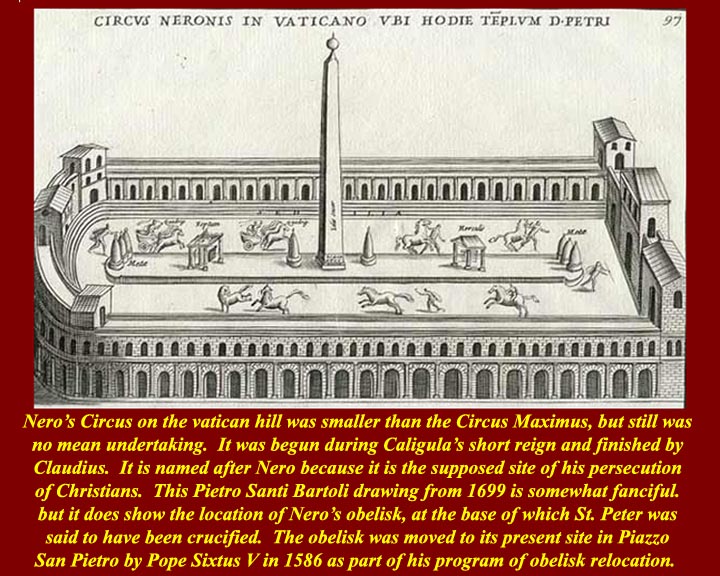
http://www.mmdtkw.org/AU0639aChristianMartyrs.jpg
http://www.mmdtkw.org/AU0639bPeterPaul.jpg
http://www.mmdtkw.org/AU0639cNeroCircus.jpg
http://www.mmdtkw.org/AU0639dCircusBasilicasPlans.jpg
Nero's persecution of Christians, according to Christian tradition, took place in the "Circus of Nero", which was so named because of the persecution. Construction of the circus was actually started by Caligula and finished by Claudius. At some time in the second or third Century a tomb in the cemetery north of the circus was being shown to pilgrims as the Tomb of Peter. He was said to have been crucified near the obelisk at the center of the circus spina. Excavations in the 20th century apparently identified this early shrine, which was labeled in ancient times as the tomb of Peter.
"Old St Peter's" church, built by Constantine or shortly thereafter, was a martyrion church built above the supposed tomb, and "New St. Peter's" was built centered on the same spot.
The total number of Christian martyrs is a subject that has been fraught with controversy at least since Gibbon, using early Christian and non-Christian sources, estimated, in his Decline and Fall of the Roman Empire (in Volume 1, Chapter 16), that fewer than 2000 persons "were permitted to seal with their blood their belief of the Gospel" in the persecution of Diocletian. Gibbon concluded his chapter with
"... a melancholy truth which obtrudes itself on the reluctant mind; that, even admitting, without hesitation or inquiry, all that history has recorded, or devotion has feigned, on the subject of martyrdoms, it must still be acknowledged that the Christians, in the course of their intestine dissensions, have inflicted far greater severities on each other than they had experienced from the zeal of infidels."
Gibbon was immediately attacked in numerous Christian tracts. He left London and wrote the remaining volumes of the Decline and Fall in Lausanne. (The whole of the Decline and Fall is available on the Internet in extensibly indexed form as part of the Christian Classics Ethereal Library at http://www.ccel.org/g/gibbon/decline/home.html.
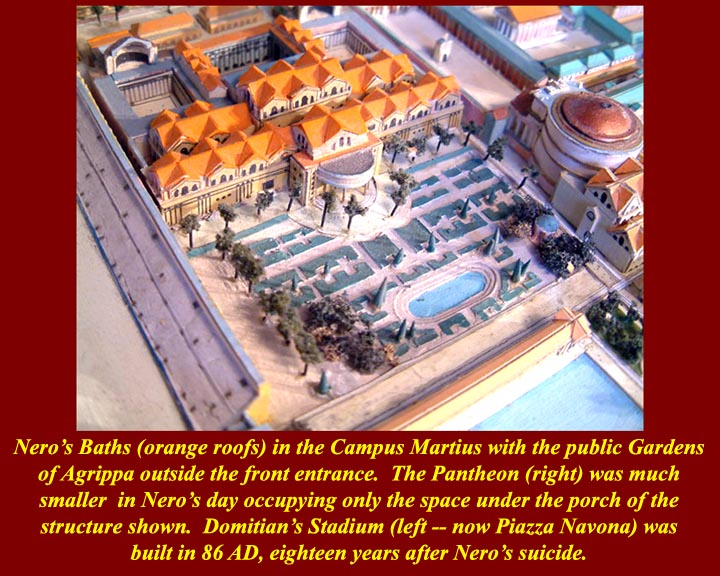
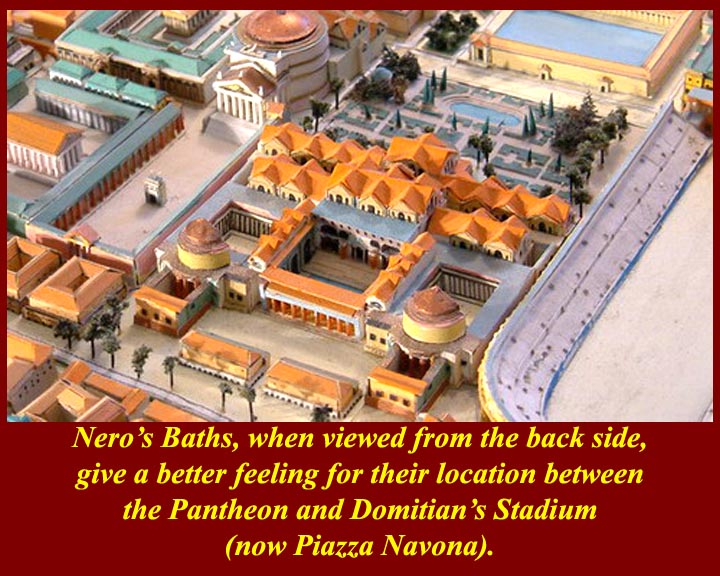
http://www.mmdtkw.org/AU0640aNeroBaths.jpg
http://www.mmdtkw.org/AU0640bBathsOfNero.jpg
http://www.mmdtkw.org/AU0640cNeroBathFootprint.jpg
Nero built a set of public baths in the Campus Martius adjacent to Agrippa's public gardens and near Agrippa's smaller earlier baths (which were the earliest public baths in Rome. Public baths became a fixture in Rome and other important Roman cities, and, as time went on, each new set was larger than previous ones. Even so, Nero's baths covered several city blocks in modern Rome.
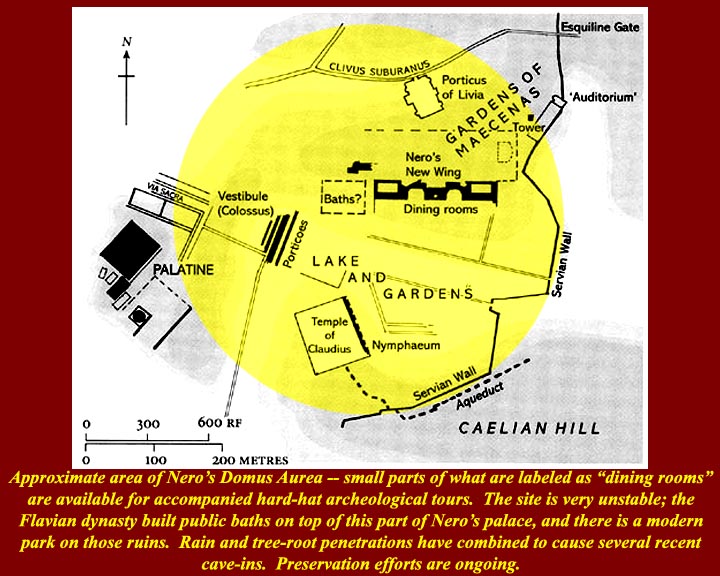
http://www.mmdtkw.org/AU0641aDomusAureaLocator.jpg
http://www.mmdtkw.org/AU0641bDomusAreaFootprint.jpg
As noted above, Nero took over a large section of burnt out territory to build his Domus Aurea. Most of the new space had been occupied by low-income housing east and south of the seasonal swamp/pond where the Colosseum now stands. He also enfolded existing buildings on the Palatine hill, the Velia, between the Palatine and the Esquiline, and the platform that Claudius had built on the Caelian Hill, which became a large nymphaeum, or water garden. According to later descriptions, the northern stairway to the Claudian platform became an artificial waterfall that flowed into the "lake" in Nero's courtyard -- that seasonal swamp/pond artificially deepened. On the slope of the Esquiline he built a structure that might in the Renaissance be called a "Casino", a retreat for dining and entertainment in a building separate from living quarters. It is that structure which is now shown as the "Domus Aurea" although the whole complex appears to have been so named in Nero's time.
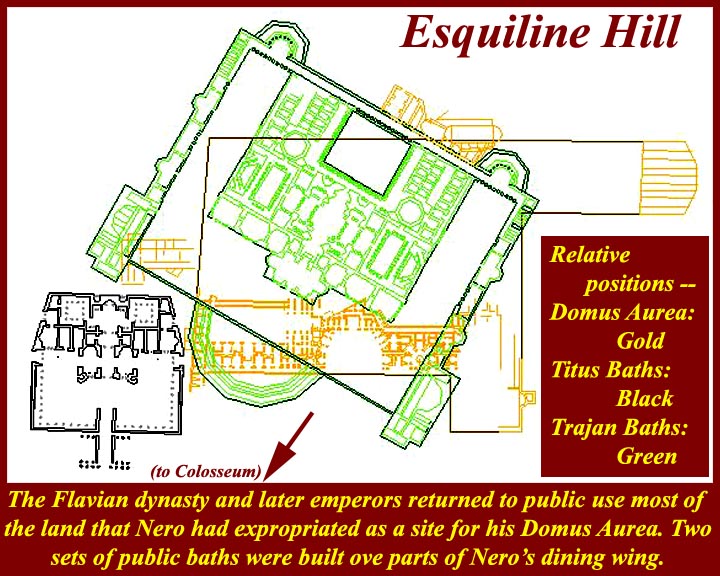
http://www.mmdtkw.org/AU0641cDomusAureaTitusTrajanBaths.jpg
http://www.mmdtkw.org/AU0641dDomusAureaTouring.jpg
There was a year of chaos after his death, known as "the year of the four emperors" before the Flavian dynasty took over. The first priority of Flavius was to restore the reputation of the office of emperor. As part of that effort, most of Nero's structures in the Domus Aurea were returned to public use or went back into housing almost as soon as Nero was dead. The entertainment building, now shown as the Domus Aurea, was preserved because it was used as the base for other public uses. Titus, the second Flavian built a set of public baths offset a bit from the center of the entertainment building, and the rest of the area was simply backfilled and turned into a public park adjacent to the old gardens of Maecenas. By 109 AD, 41 years after the death of Nero, Trajan, an emperor of the Antonine dynasty (which followed the Flavians) had finished a much larger set of baths right on top of Nero's dining and entertainment pavilion. Huge brick support pillars and walls were driven down through Nero's building.
The enormous foundations that had been placed in the Domus Aurea to support the new building helped to preserve what remained of the Domus. The ruins have been visited since the XV century, and its paintings have been an inspiration for many artists (i.e. Raphael in his decoration of the Logge Vaticane) who have left their graffiti on the walls. The Domus Aurea was then called "le grotte", and this seems to be the origin of the term "grottesco" (grotesque) used first in art and then in other fields.
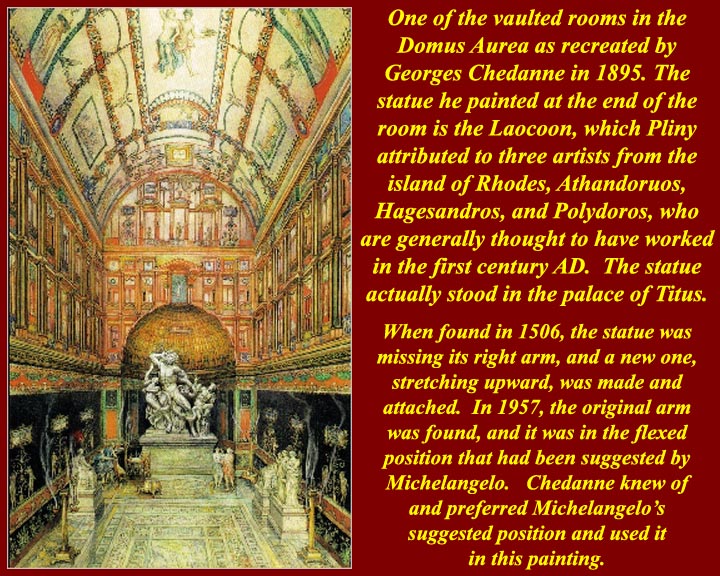
http://www.mmdtkw.org/AU0641eLaocoonGoldenHouse.jpg
http://www.mmdtkw.org/AU0641fDomusAureaVaultedRoom.jpg
The first image is an artist's representation of how one of the high vaulted rooms in the Domus Aurea looked when it was new. The statue that he painted in at the end of the room is the "Laocoon", which is now in the Vatican museum and which may have been displayed in the Domus Aurea before being moved to the Palace of Titus, where Pliny the Elder reported seeing it. The second image is a part of the same room as it looks today.
http://www.mmdtkw.org/AU0641gDomusAureaScaffoldRoom.jpg
Stabilization and restoration work is a constant endeavor in the Domus Aurea. Special hard-hat tours can be arranged through Roman tourist offices, but there's no guarantee you will actually get in. It depends mostly on the weather. Rainwater seepage around roots of trees in the park above the ruins destabilizes the structure.
http://www.mmdtkw.org/AU0641hDomusAurea.jpg
The most famous room: Nero's circular dining room reportedly had a rotating ceiling through which perfume was sprayed and rose petals were strewn. The story that one dinned guest suffocated in a surfeit of rose petals may be an exaggeration.
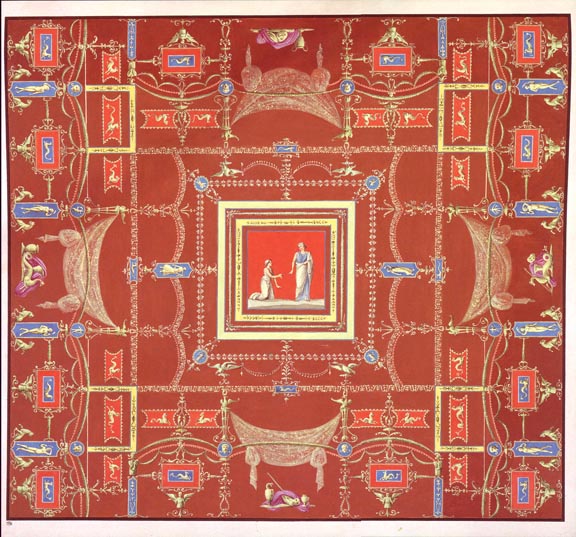
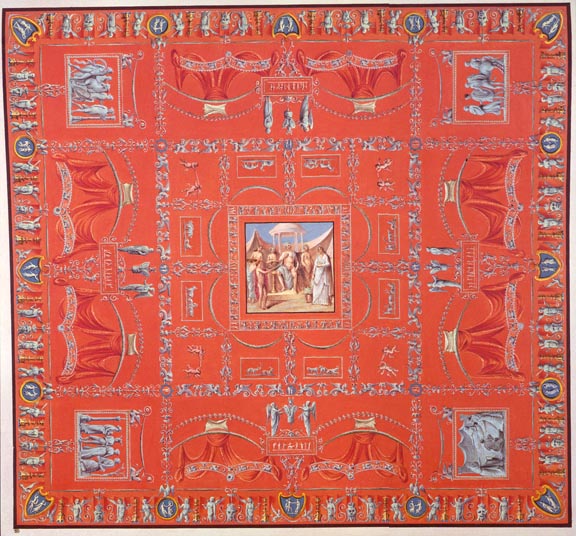
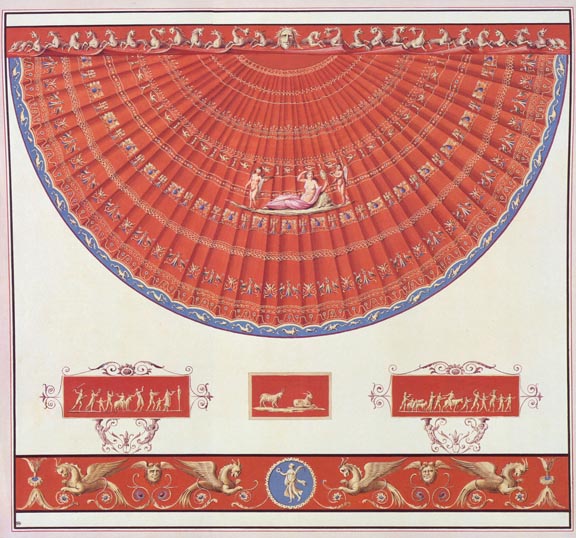
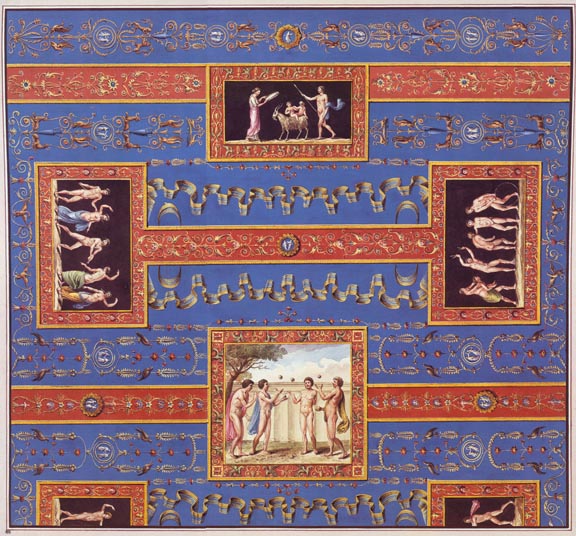
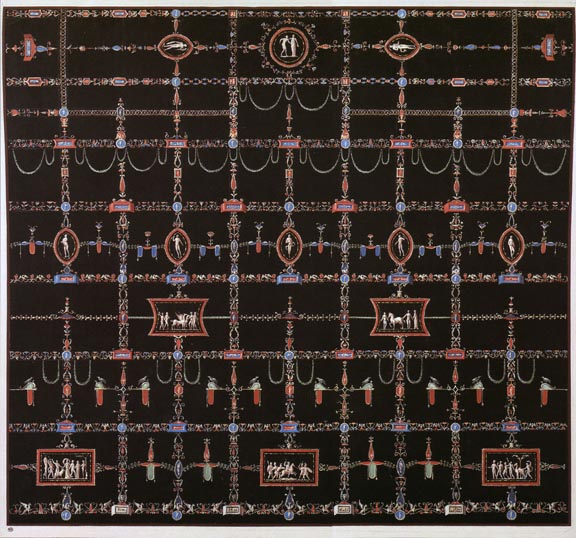
http://www.mmdtkw.org/AU0642aGrotesqueDomus2.jpg
http://www.mmdtkw.org/AU0642bGrotesqueDomus3.jpg
http://www.mmdtkw.org/AU0642cGrotesqueDomus4.jpg
http://www.mmdtkw.org/AU0642dGrotesqueDomus5.jpg
http://www.mmdtkw.org/AU0642eGrotesqueDomus6.jpg
http://www.mmdtkw.org/AU0642fGrotesqueDomus7.jpg
Reconstruction drawings of some of the artwork on ceiling vaults in the Domus Aurea. Nero's architects on the Domus Aurea project, recorded as Severus and Celer, found a way to adhere large frescoes and even mosaics on the vaults. The style, sometimes called "antique Roman" in antiquity, appears to have originated with the Etruscans.
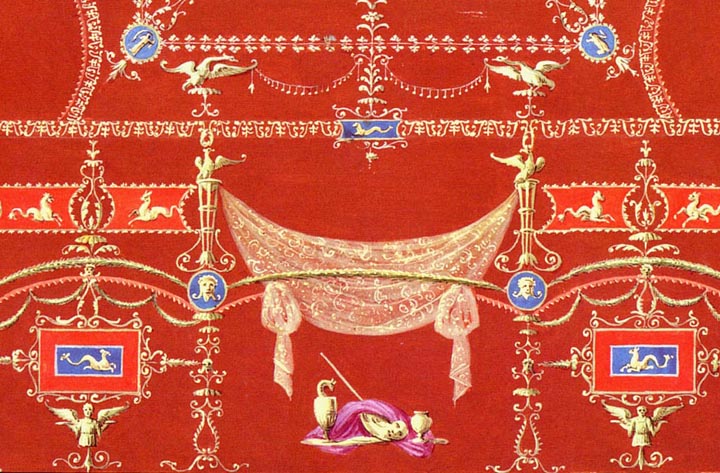
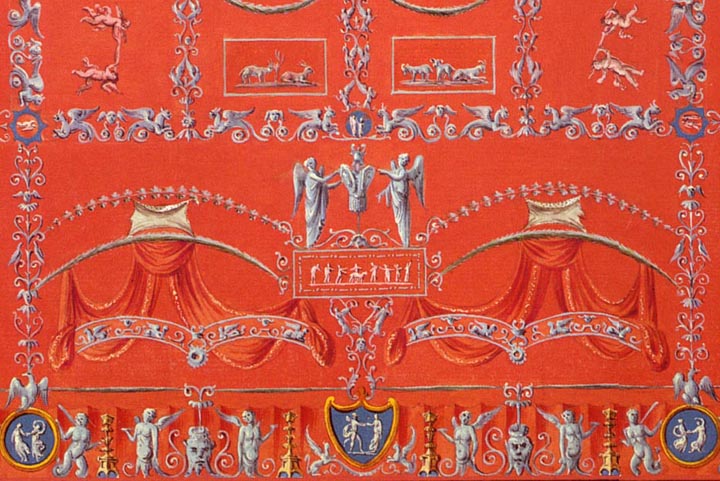
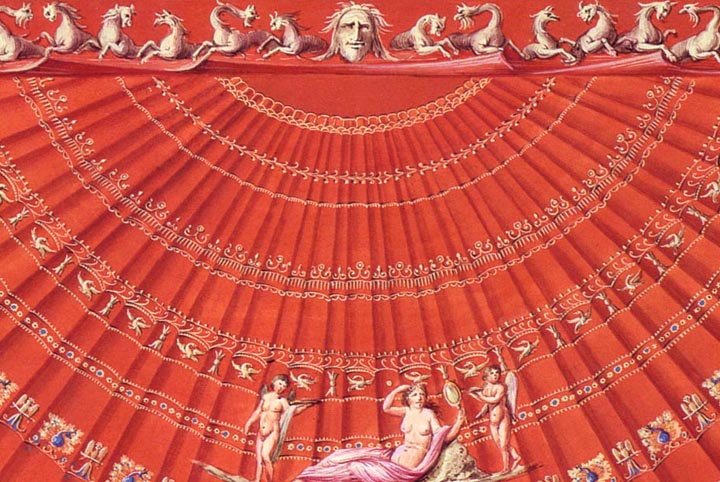
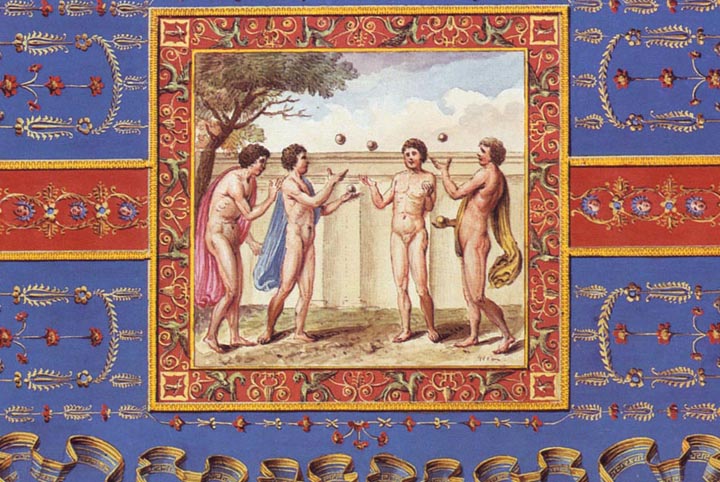
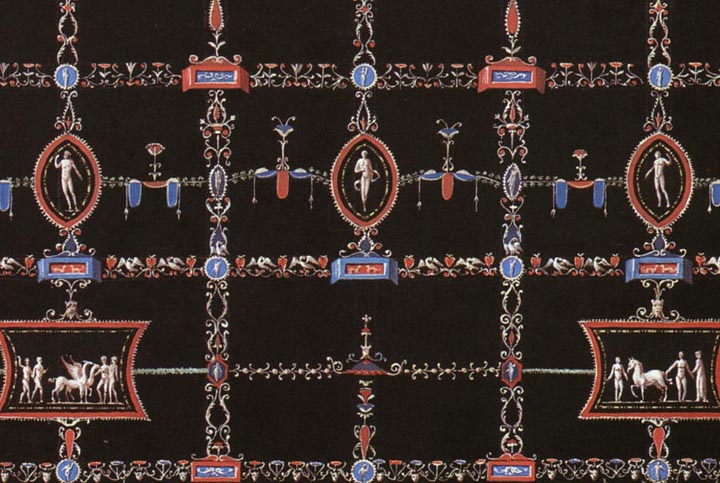
http://www.mmdtkw.org/AU0643aGrotesqueDetail2.jpg
http://www.mmdtkw.org/AU0643bGrotesqueDetail3.jpg
http://www.mmdtkw.org/AU0643cGrotesqueDetail4.jpg
http://www.mmdtkw.org/AU0643dGrotesqueDetail5.jpg
http://www.mmdtkw.org/AU0643eGrotesqueDetail6.jpg
http://www.mmdtkw.org/AU0643fGrotesqueDetail7.jpg
Details of "grotesque" art from the same images. Archaeologists working at Pompeii discovered artwork similar to that which was characteristic of the Domus Aurea and called it "fourth style ". The Pompeian art dated from the same time as Nero's.
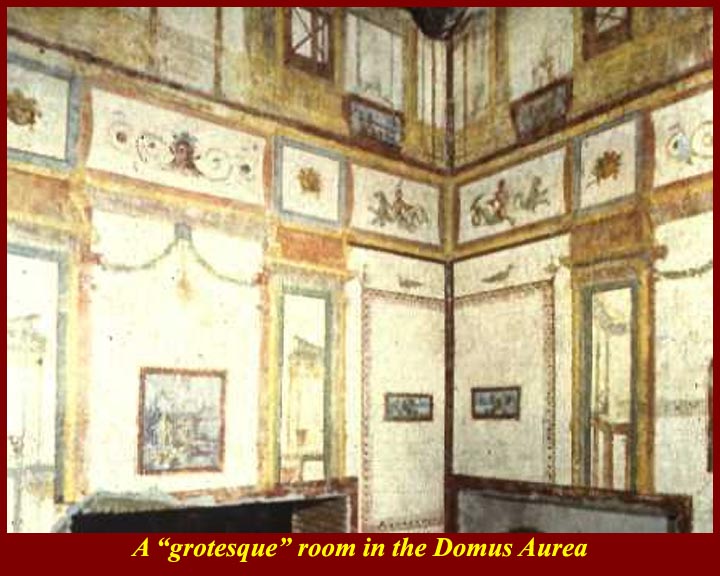
http://www.mmdtkw.org/AU0644GoldenHouseFrecoGrotesque.jpg
http://www.mmdtkw.org/ALRIVes0749FourthStyle.jpg
A corner of a room in the Domus Aurea and a representation of a fourth style wall in Pompeii.
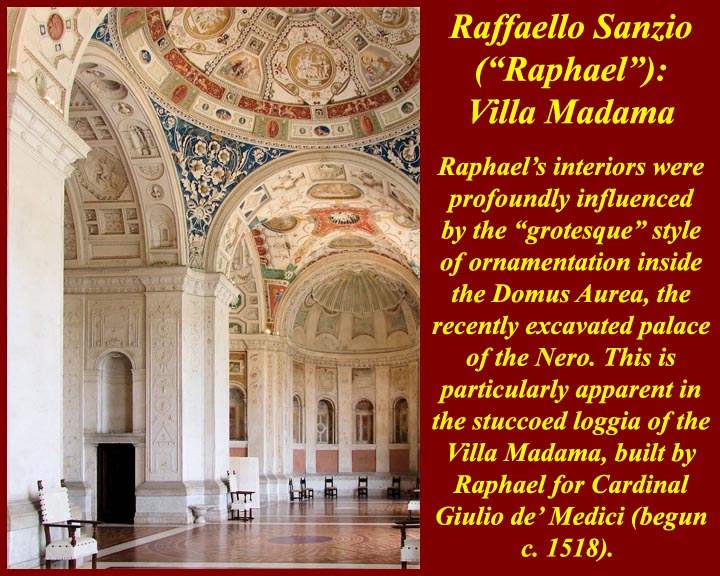
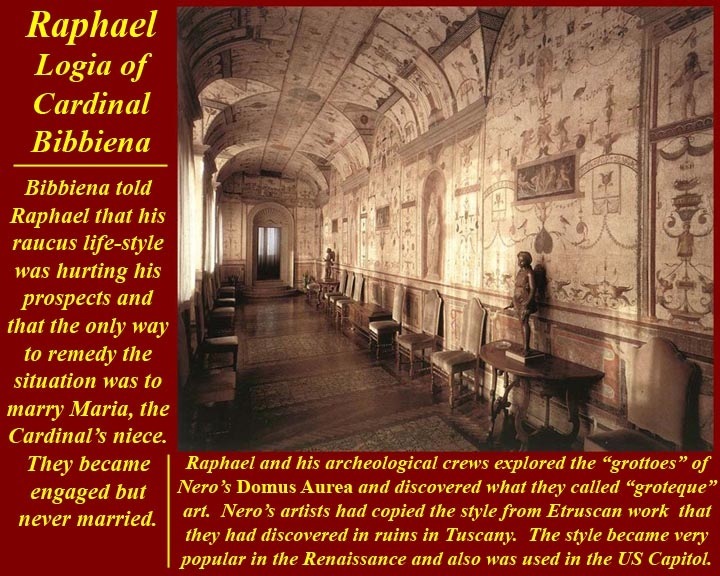
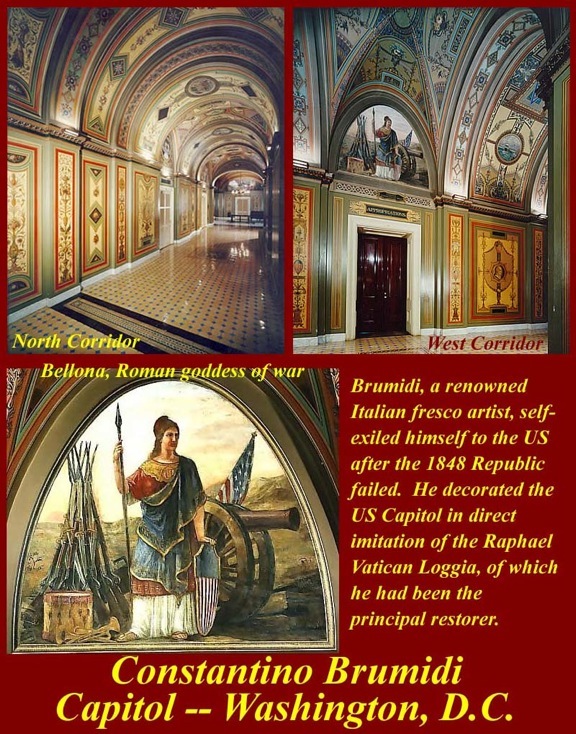
http://www.mmdtkw.org/AU0645VillaMadamaRaphael.jpg
http://www.mmdtkw.org/RenRom0712-RaphaelLoggetta.jpg
http://www.mmdtkw.org/RenRom0732-BrumidiCapitol.jpg
http://www.mmdtkw.org/RenRom0733-BrumidiGrotesque.jpg
Although Raphael was not the first to copy the "grottesco" style from the Domus Aurea, he certainly did it in a big way. The first image is the loggia of the Villa Madama in Rome, which Raphael designed and his students executed. The second image is Raphael's Loggetta in the Vatican. The third and fourth images show examples of the work of Constantino Brumidi in the US Capitol Building in Washington DC. Brumidi was an Italian exile after the failed Roman Republic of 1848. Before his self-exile to the United States he had restored Raphael's Loggetta and his "Stanzae" (papal apartments) in the Vatican
http://www.mmdtkw.org/AU0646BushNero.jpg
No comment needed.

